Vol. 69, No. 14 (2020)
2020-07-20
INVITED REVIEW
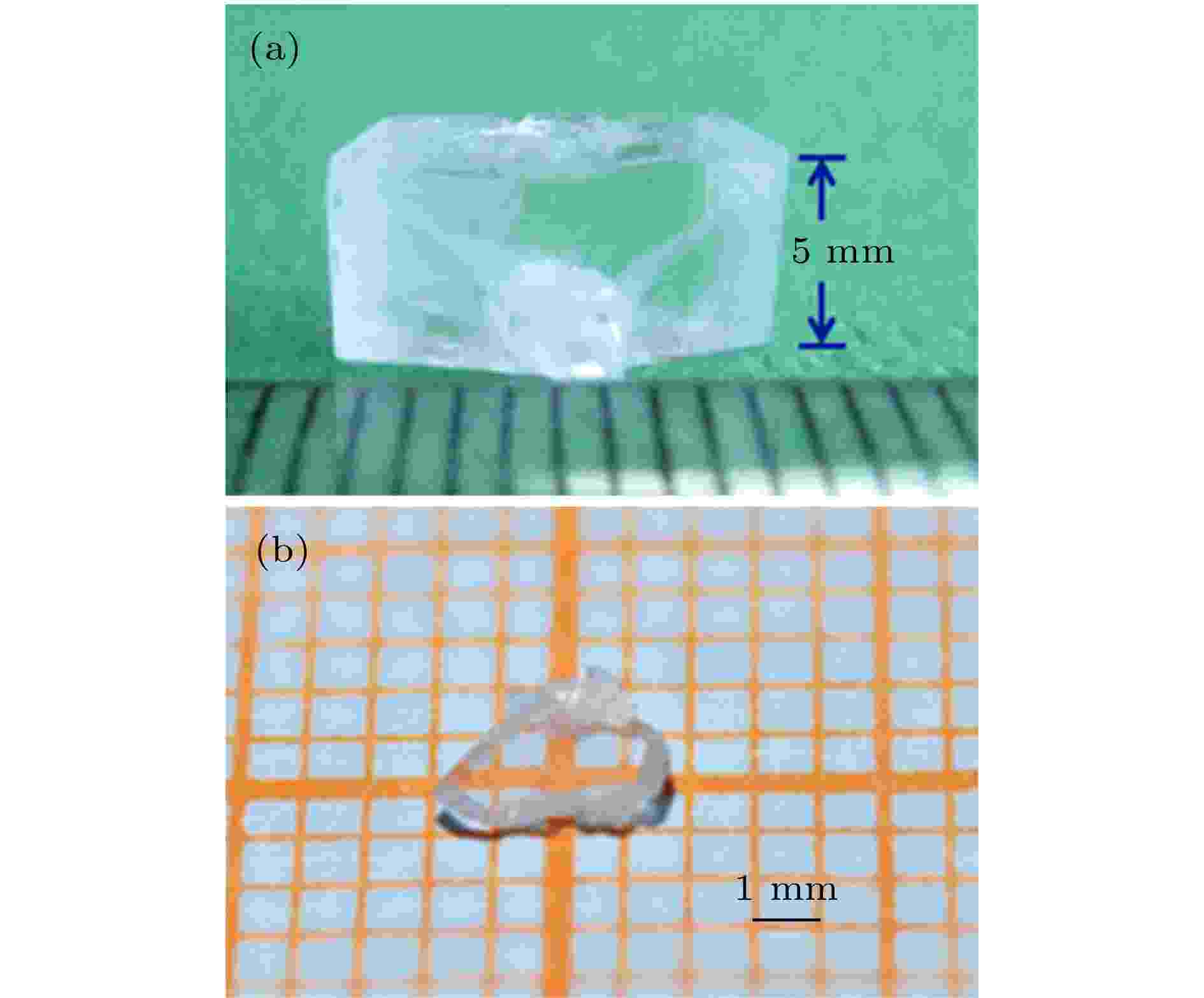
INVITED REVIEW
2020, 69 (14): 140503.
doi: 10.7498/aps.69.20200161
Abstract +
Self-organization represents a ubiquitous transition from disorder to order. It plays a critical role in forming crystalline materials and functional structures in biology. Functional structures are generally hybrid on a multiple scale in which nano-structures are often organized in a specific way such that they can perform functions. There are two typical functional structures: static equilibrium structures and dynamic non-equilibrium structures. In this review, recent advances in understanding and mimicking functional structures are summarized. Although great advances have been achieved, it is still a big challenge to realize dynamic non-equilibrium structures. In this case, we suggest that the controlling of self-organization in active systems may be a route toward interactive and adaptive structures.
TOPICAL REVIEW—The frontiers and applications of topological physics

EDITOR'S SUGGESTION
2020, 69 (14): 147301.
doi: 10.7498/aps.69.20200506
Abstract +
We review and discuss the electronic structures, topological properties and orbital magnetism in twisted bilayer (TBG) and multilayer graphene systems. Moiré pattern is formed in twisted bilayer graphene due to the mutual twist of the two graphene layers. The moiré potential induced by the twist can generate opposite pseudo magnetic fields in the Moiré supercell, which are coupled with the Dirac fermions and generate two sets of pseudo Landau levels with opposite Chern numbers $\pm1$ . The two flat bands for each valley each spin of TBG are equivalent to the two zeroth pseudo Landau levels with opposite Chern numbers and opposite sublattice polarizations. Such a pseudo-Landau-level representation has significant implications on the quantum anomalous Hall states observed at integer fillings of the flat bands in TBG at the magic angle. The origin of the magic angle can also be naturally explained by using the pseudo-Landau-level picture. We further discuss twisted multilayer graphene systems, and show that topological flat bands generally exist in the twisted multilayer graphene systems. These topological flat bands have nonzero valley Chern numbers, which can be described by a succinct formula under certain approxmations. These topological flat bands in twisted bilayer and multilayer graphene systems are associated with orbital magnetism. A valley polarized state in the twist graphene system is an orbital magnetic state with nontrivial current-loop pattern in the moiré supercell. The experimentally observed correlated insulating states at $\pm 1/2$ fillings and at charge neutrality point of magic-angle TBG can be valley polarized states, which are associated with compensating current loops and induce staggered orbital magnetizations on the moiré length scale. If $C_{2z}$ symmetry is broken due to the alignment of hexagonal boron nitride substrate, then a valley-polarized ground state would be a moiré orbital ferromagnetic state, which exhibits not only (quantum) anomalous Hall effect, but also novel magneto-optical and nonlinear optical responses.
GENERAL
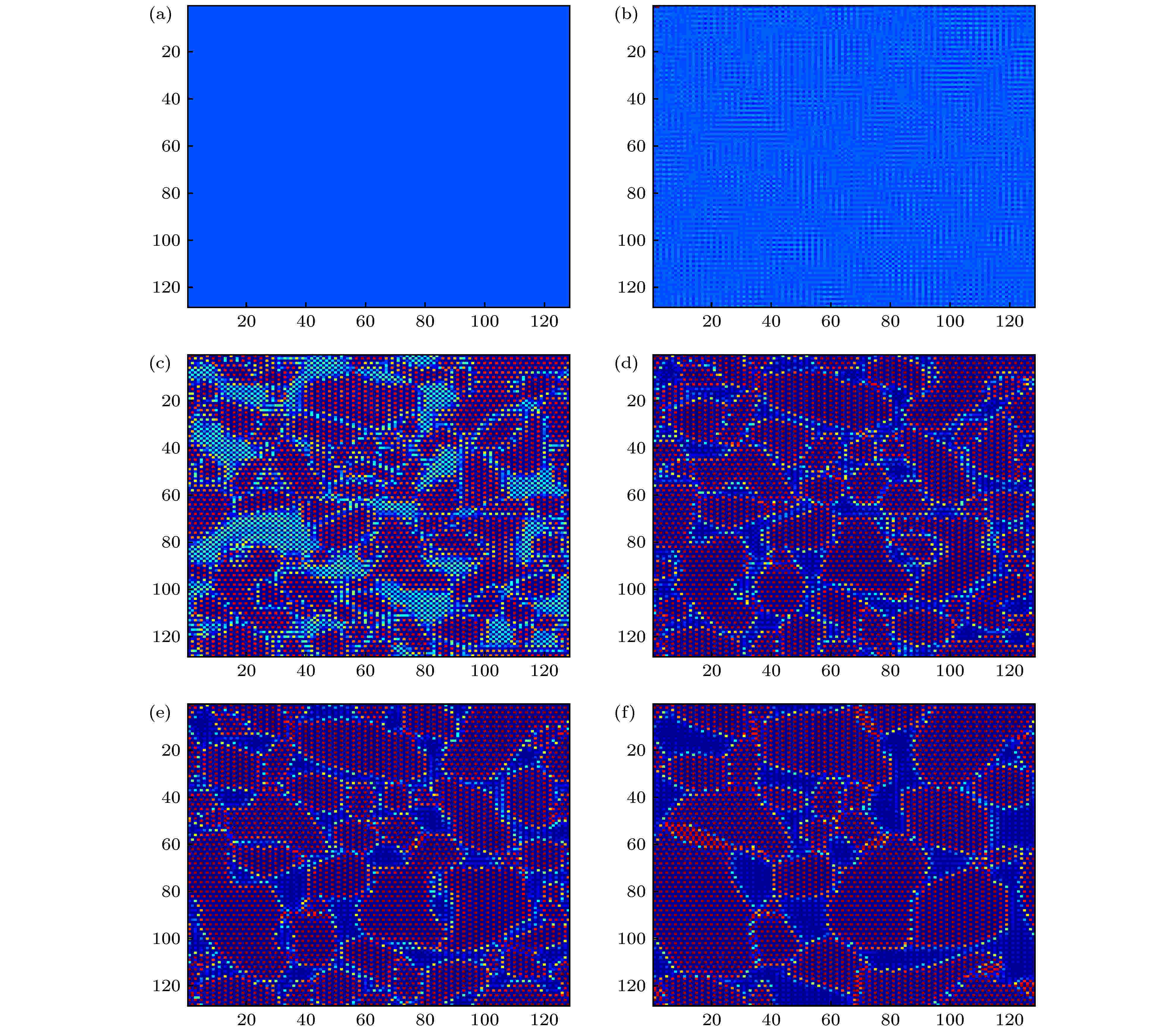
2020, 69 (14): 140201.
doi: 10.7498/aps.69.20200154
Abstract +
Medium entropy alloys have attracted much attention because of their excellent physical and chemical properties. Nano-scaled L12 structure ordered phase plays an important role in strengthening the mechanical properties of medium entropy alloys, and its local atomic arrangement plays a decisive role in yield strength of medium entropy alloys. In this paper, the microscopic mechanism of the precipitation process of Ni60Al20V20 medium entropy alloy is studied by using the micro diffusion phase field dynamics model, in which the probability of atoms to occupy the lattice position is taken as a field variable to describe the configuration of atoms and the morphology of precipitates. In this model, the shape and concentration of precipitate phase, the position and appearance of new phase cannot be set in advance. Combined with the inversion algorithm, the precipitation mechanism of ordered phases of γ' (L12-Ni3Al) and θ (DO22-Ni3V) is discussed by analyzing the evolution of atomic images, the change of order parameters and volume fraction. The result shows that two kinds of ordered phases are precipitated in the kinetical process of disordered phase ordering into Ni60Al20V20 medium entropy alloys, which are of $ {\gamma }' $ phase with L12 structure and of $ \theta $ phase with DO22 structure.The two ordered phases constitute a pseudo binary system. The L10 phase precipitates at the same time as DO22, and the L10 phase gradually transforms into the L12-γ′ phase, while the traditional Ni75Al7.5V17.5 alloy first precipitates L10 phase, and then the DO22 phase precipitates at the boundary of anti-phase domain of L12 phase. In the transition from L10 to L12, α position of fcc lattice is occupied by Ni atom, and the β position is occupied by Al atom and V atom. The congruent ordering of atoms results in the formation of θ single-phase ordered domain of DO22 structure, followed by spinodal decomposition; the non-classical nucleation of L10 structure gradually transforms into L12-γ′ phase and spinodal decomposition. The interaction potential between the first-nearest-neighbor atoms of Ni-Al increases linearly with temperature, and increases gradually with the increase of long range order parameters. The incubation period of Ni60Al20V20 medium entropy alloy lengthens with temperature increasing. This study can be applied to the design of Ni-Al-V medium entropy alloy.

COVER ARTICLE
2020, 69 (14): 140301.
doi: 10.7498/aps.69.20200372
Abstract +
Realization of spinor Bose-Einstein condensate in an optical trap has made it possible to create a variety of topological nontrivial structures, due to the vector character of the order parameter. Recently, artificial spin-orbit coupling in the spinor Bose-Einstein condensate, owing to coupling between the spin and the center-of-mass motion of the atom, provides an unprecedented opportunity to search for novel quantum states. As is well known, the potential well in the Bose-Einstein condensate is adjustable. The toroidal trap is an important model potential because of its simplicity and richness in physics. In particular, the spinor Bose-Einstein condensate under the toroidal trap has brought an ideal platform for studying fascinating properties of a superfluid, such as persistent flow and symmetry-breaking localization. For the case of the spin-orbit-coupled Bose-Einstein condensate, the previous studies of the toroidal trap mainly focused on the two-component or antiferromagnetic case. However, in the presence of a toroidal trap, there remains an open question whether the combined effects of the spin-orbit coupling and rotation can produce previously unknown types of topological excitations in the ferromagnetic Bose-Einstein condensate. In this work, by using quasi two-dimensional Gross-Pitaevskii equations, we study the ground state structure of spin-orbit coupled rotating ferromagnetic Bose-Einstein condensate in the toroidal trap. We concentrate on the effects of the spin-orbit coupling and the rotation on the ground states. The numerical results show that in the presence of a toroidal trap, the ground state structure is displayed as half-skyrmion chain with circular distribution. Adjusting the strength of spin-orbit coupling not only changes the number of half-skyrmion in the system, but also controls the symmetry of half-skyrmion with circular distribution. As the rotation frequency increases, the system undergoes the transitions from the plane wave to the half-skyrmion chain with circular distribution, and eventually developing the half-skyrmion phase of triangular lattice. Next, we examine the effect of spin-independent interaction on spin-orbit coupled rotating spinor Bose-Einstein condensate. As the spin-independent interaction increases, the topological defects in the condensate increase due to the variation of the local magnetic order. We also discuss the influence of well shape on the ground state structure. These topological structures can be detected via the time-of-flight absorption imaging technique. The spin-orbit coupled spinor Bose-Einstein condensate in the toroidal trap is an important quantum platform, which not only opens up a new avenue for exploring the exotic topological structures, but also is crucial for realizing the transitions among different ground states. This work paves the way for futureexploring the topological defects and the corresponding dynamical stability in quantum system subjected to the toroidal trap.

2020, 69 (14): 140501.
doi: 10.7498/aps.69.20191657
Abstract +
In classic statistical physics, an isolated system corresponds to a constant energy shell in the phase space, which can be described by the microcanonical ensemble. While, for an isolated quantum system, the conventional treatment is to subject the system to a narrow energy window in the Hilbert space instead of the energy shell in classical phase space, and then confine the participating eigen states of system wave function in the narrow window, so that the microcanonical ensemble can be recovered in the framework of quantum mechanics. Apart from the traditional theory, there is a more self-consistent description for the isolated quantum system, that is, the quantum microcanonical (QMC) ensemble. The QMC ensemble abandons the narrow energy window assumption, and allows all the eigen states to contribute to the system wave function on condition that the system average energy is fixed at a given value. At the same time, the total occupation probability of these eigen states is conserved to unity. The most probable probability distribution obtained in the Hilbert space for an isolated quantum system according to the constraints specified above is called the QMC statistics. There is a clear difference between the QMC distribution and the traditional Gibbs distribution having an exponential form. Through the external periodic drives, an isolated quantum system may produce the QMC distribution, which is a consequence of the interplay between internal origins and external drives. In this paper, we investigate the conditions for the formation and suppression of QMC distribution by using the exact diagonalization method based on the one-dimensional Ising model. We start with the one-dimensional Ising model and focus on three different cases of periodic drives: systems under vertical (along the z axis), horizontal (along the x axis), horizontal magnetic field together with random internal (along the y axis) magnetic field. For all these three cases, the external magnetic fields are set to be ordinary rectangular pulses and the Gibbs distributions are taken as the initial states. We then study the evolutions and their asymptotic tendencies to the QMC distributions of the eigen state occupation probability under the effect of external periodic magnetic field. The results show that under the vertical magnetic field, the eigen state occupation probability does not change, and the system cannot produce the QMC distribution; under the horizontal magnetic field, the system tends to display a QMC distribution, but only partly; under horizontal and random internal magnetic fields at the same time, the transition to QMC distribution can be fully realized, and finally the system is almost completely thermalized. In order to clarify the different behaviors of the Ising model in the three cases, we also calculate the information entropy of the eigen state of Floquet operator in the eigen representation of the unperturbed Hamiltonian. We find that as the information entropy of the Floquet eigen state increases, the convergence to the QMC distribution in the Hilbert space is improved. We also notice that the mechanism for the emergence of QMC distribution is closely related to the thermalization effect of the isolated quantum system. Our analyses show that when the magnetic field is vertical, it cannot trigger the thermalization of the system. When the magnetic field is horizontal, the system becomes partly, but not completely, thermalized. When we add a horizontal periodic magnetic field and a random internal magnetic field at the same time, the system can be completely thermalized to infinite temperature. Thus, the asymptotic behavior towards the QMC statistics is a reflection of the fact that the isolated quantum system is thermalizable under periodic drives.

2020, 69 (14): 140502.
doi: 10.7498/aps.69.20191981
Abstract +
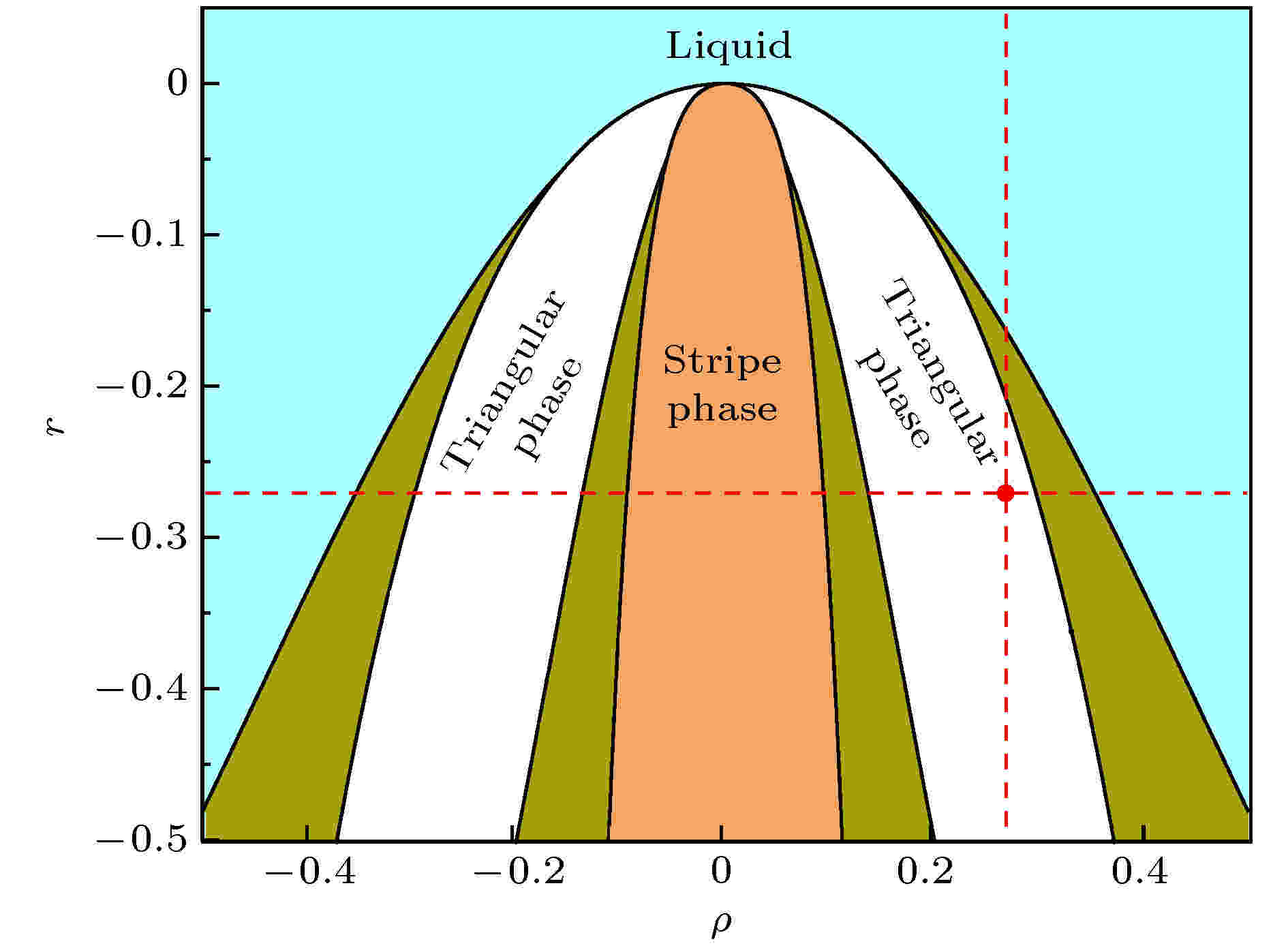
2020, 69 (14): 140504.
doi: 10.7498/aps.69.20200133
Abstract +
Grain boundary affects the microstructure of metal material, and thus further its macroscopic properties. As is well known, under the action of applied stress, the grain boundary migrates. The structures and arrangements of grain boundary dislocations at different misorientation angles are very different, which affects the macrophysical and chemical properties of metal crystal. Therefore, it is of great theoretical and practical significance to study the dislocation structure and reaction mechanism of grain boundary under different misorientations for further studying the material properties.The phase field crystal method is used to simulate the low-angle asymmetric tilt grain boundary structure and dislocation motion on a nanoscale. From the perspective of the change of the position of the grain boundary dislocation motion under the applied stress and the change of the free energy of the crystal system, the influences of the misorientation angle on the low-angle asymmetric tilt grain boundary structure and the motion of the grain boundary dislocation are analyzed. The results show that the types of dislocation pairs of low-angle asymmetric tilt grain boundaries at different misorientation angles are the same. With the increase of misorientation angle, the grain boundary dislocation pairs increase, and n1n2 and n4n5 type dislocation pairs are more easily formed at the grain boundaries. Under the action of applied stress, the initial movement states of the grain boundary dislocation pairs at different misorientation angles are all climbing along the grain boundaries. As the system energy accumulates, the larger the misorientation angle is, the more the number of decomposed grain boundary dislocation pairs decomposed will be, and only in the dislocation pairs of n1n2 and n4n5 type there occurs decomposition reaction. There are four stages in the free energy curve of the low-angle asymmetric tilt grain boundary system at different misorientation angles, which correspond to the dislocation pairs climbing, dislocation pairs sliding and decomposition, dislocation pairs reaction to form single crystal, and the free energy rising process of the system. Further research shows that as the misorientation angle increases, the time for the single crystal system formed by the dislocation of grain boundary pairs to annihilate is required to be long.

2020, 69 (14): 140601.
doi: 10.7498/aps.69.20191800
Abstract +
Cold collision frequency shift is one of the major systematic effects which limit the frequency uncertainty of the cesium fountain atomic clock. It is proportional to the effective atomic density, which is defined as the average density over the initial spacial and velocity distribution. The measurement of the frequency shift is based on a differential method, in which the fountain clock is operated with two different atomic densities, i.e. high density and low density, in turn. The clock frequency without collision shift can be achieved by linear extrapolation with the frequencies and density ratios of two states. For the density ratio is estimated with the atom number, it plays a crucial role in generating atoms with same density distribution for reducing systematic uncertainty in cold collision frequency shift estimation. The rapid adiabatic passage method is used in Cesium fountain clock to realize homogeneous transition probability, which modulates the amplitude and frequency of microwave continuously to prepare atom sample. To investigate the precision of this method, theoretical analysis and experimental measurement are both used here. An equation of deviation is derived from the time evolution of Bloch vector. The vector rotates at angular speed Ω with the rotation axis processing at lower angular speed. The deviations in the two directions on the surface of Bloch sphere are determined by the equations which are similar to wave equations, and can be simplified into wave equations when the deviations are sufficiently small. It is shown in the equations that the deviations are stimulated by angular velocity and angular acceleration of the precession, and is inversely proportional to the square of Ω. Further calculation shows that the deviation becomes smaller when the amplitude of microwave frequency and Rabi frequency are close to each other. It is then confirmed experimentally. The effects of some other parameters, such as the pulse length and time delay, on transition probability are also measured, showing that the RAP method is insensitive to these parameters up to a large scope. The precision of RAP method is dominated by three factors. The first factor is the product of rotating angular speed Ω and pulse length T, i.e. ΩT: The increase of ΩT can reduce the uncertainty to a satisfactory degree. The second factor is the uncertainty of resonant frequency, so the measurement is required to be precise. The third factor is the unexpected atoms which are not selected by the microwave, and may be attributed to pulling light. After optimizing the parameters, the ratio of low density to high density can approach to 0.5 with 3 × 10–3 uncertainty, which leads to a systematic relative uncertainty of cold collision shift up to 1.6 × 10–16.
ELECTROMAGNETISM, OPTICS, ACOUSTICS, HEAT TRANSFER, CLASSICAL MECHANICS, AND FLUID DYNAMICS
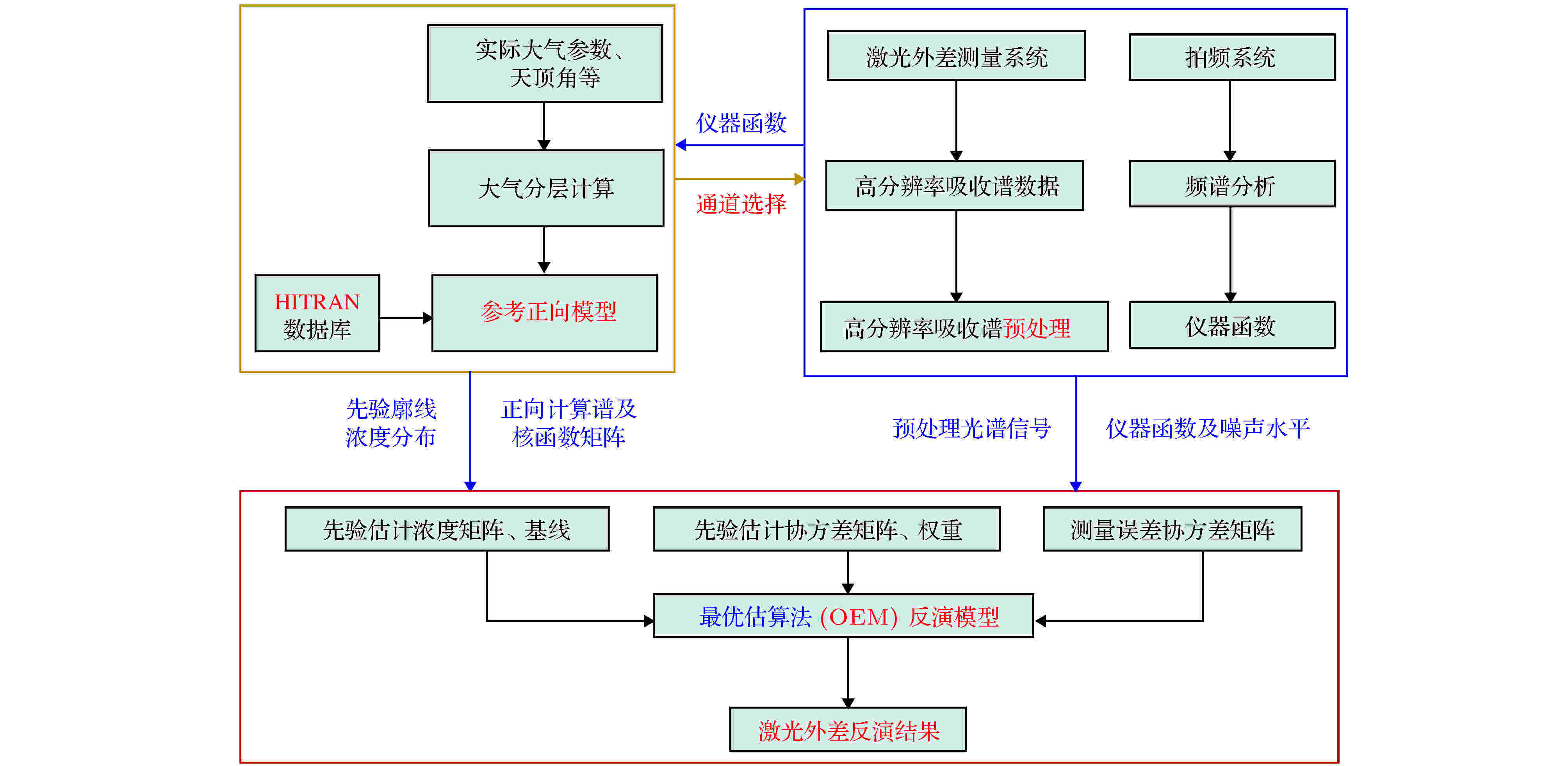
2020, 69 (14): 144201.
doi: 10.7498/aps.69.20200125
Abstract +
In this paper, a near-infrared laser heterodyne spectrometer developed by the laboratory is used to investigate the inversion of greenhouse gas column concentration and approximately evaluate the system measurement errors based on the optimal estimation algorithm. Firstly, the spectral database and the calculation results from the reference forward model are compared with the ground-based FTIR results, thereby selecting the detection window, the corresponding laser and detector. Secondly, the optimal estimation concentration inversion algorithm based on the reference forward model is established, and the Levenberg-Marquardt (LM) iterative method is adopted to realize the inversion of the concentration and vertical distribution profile of atmospheric CO2 column in the whole layer, and the long-term observation comparative experiment is carried out to verify the feasibility of this algorithm. Finally, by simulating the selected detection window spectrum in different white noise, the approximate corresponding relationship between the system signal-noise-ratio (SNR) and CO2 column concentration measuring error is eventually obtained. This research is an indispensable theoretical calculation part of the detection system and will conduce to improving the application of laser heterodyne technology in atmospheric observations.
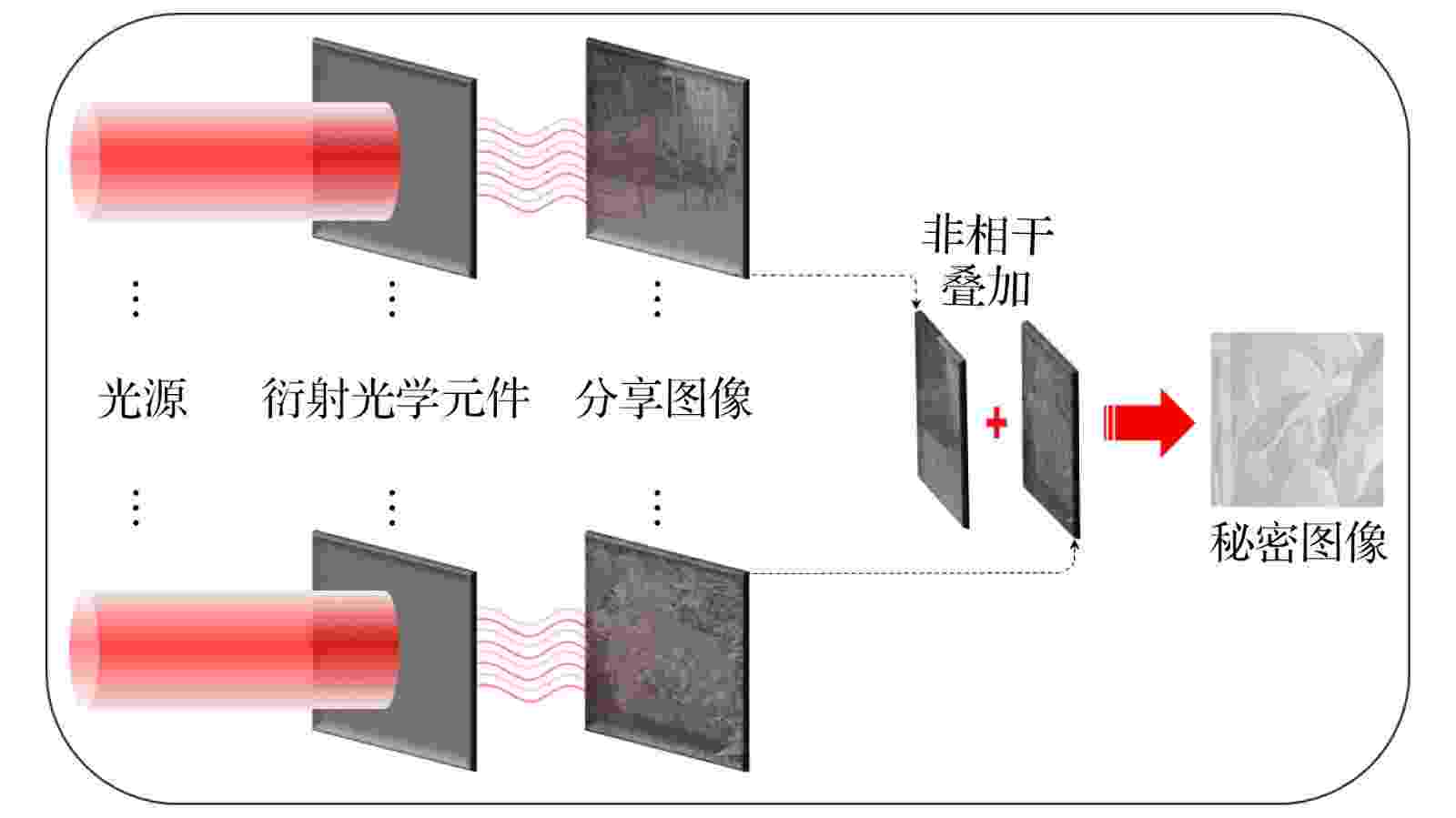
2020, 69 (14): 144202.
doi: 10.7498/aps.69.20200496
Abstract +
Recent years, with the rapid development of information technology, the information security has received more and more attention. A variety of encryption methods to protect the information have been reported. Visual cryptography is one of the encryption methods, which has highly security because of its threshold feature. And the cryptographic information can be explained by a naked eye in the decryption process. In the application of visual cryptography, however, each shared image is limited to transparency films and overlapping on computer. In our previous work, we proposed the scheme of invisible visual cryptography and developed the visual-cryptography-based optical hiding system (VCOH), which transformed the conventional visual cryptography shares into diffraction optical elements (DOEs). It not only increases the application range of visual cryptography, but also enhances security. In this paper, we propose an optical information hiding system based on the extended visual cryptography, which inherits the concept of invisible visual cryptography. In contrast to our previous work, the method proposed in this work can hide a meaningful image instead of text messages. Meanwhile, the capacity and imperceptibility of the method are greatly increased. The hiding process of the system contains two steps. Firstly, the secret image is converted into meaningful shares through the extended visual cryptography algorithm. Secondly, the meaningful shares are able to hide in phase-keys through an iterative phase retrieval algorithm, such as Gerchberg-Saxton algorithm and Yang-Gu iterative algorithm. Then the phase-keys can be made into diffraction optical elements (DOEs) to store and transport in a physical way. In the decryption process, DOEs are illuminated with the laser beam to reconstruct the meaningful shares. The secret image can be explained by the direct overlapping of the reconstructed shares without any optical or cryptographic knowledge. The simulation and optical experimental results show that the proposed method has good performance of security and validate the feasibility of the proposed method. Besides, in this paper the robustness and security issues are also analyzed. This system has a high security because of its indistinguishability under adaptive chosen ciphertext attack (IND-CCA2) security. Additionally, this system is relatively less robust than the VCOH because it shares meaningful images with highly complex and detailed structures.
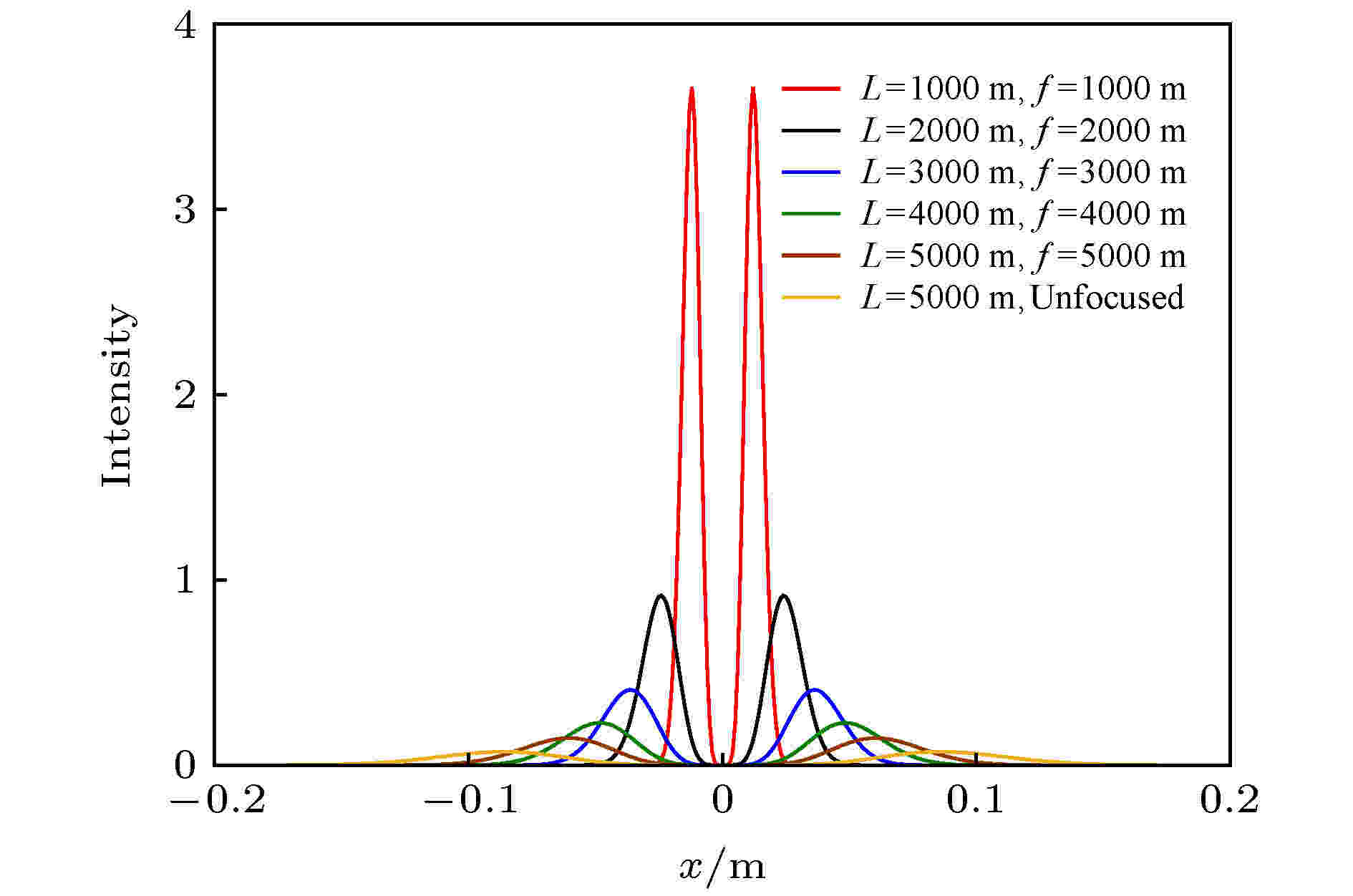
2020, 69 (14): 144203.
doi: 10.7498/aps.69.20200243
Abstract +
Vortex beams with orbital angular momenta with different mode numbers are mutually orthogonal to each other, which makes it possible to improve the information transmission efficiency in space optical communication system. Nevertheless, the implementation of this strategy is limited by the orbital angular momentum crosstalk caused by atmospheric turbulence. Focused Laguerre-Gaussian vortex beams are less affected by atmospheric turbulence due to their lager intensity density. Consequently, focused Laguerre-Gaussian vortex beams can be used as the carriers to reduce the orbit angular momentum crosstalk and increase the channel capacity of information transmission. In this paper, based on the spiral spectrum analysis theory, the analytical expression of spiral spectrum of focused Laguerre Gaussian beam propagating in anisotropic atmospheric turbulence is derived. The influences of turbulence and beam parameters on the received power of focused and unfocused Laguerre Gaussian beam are investigated via numerical calculations. Finally, the multi-phase screen method is used for verificating the simulation. The research findings are as follows. First, with the increase of transmission distance, turbulence intensity and topological charge, the receiving power of orbital angular momentum decreases, that is, the orbital angular momentum crosstalk turns more serious. Second, the larger the turbulence inner-scale, anisotropy index and beam wavelength are, the smaller the orbital angular momentum crosstalk is. Third, when the receiving aperture reaches a certain value, its influence on the orbit angular momentum crosstalk is very small. Fourth, different parameters have different effects on crosstalk, and the orbit angular momentum crosstalk of the focused vortex beam is less than that of the unfocused vortex beam. Therefore, in the vortex optical communication, the focused vortex beams can be used as the signal light to reduce the crosstalk between the orbit angular momentum modes, and thus improving the communication quality. These results have some theoretical reference values for reducing crosstalk in free-space optical communication.
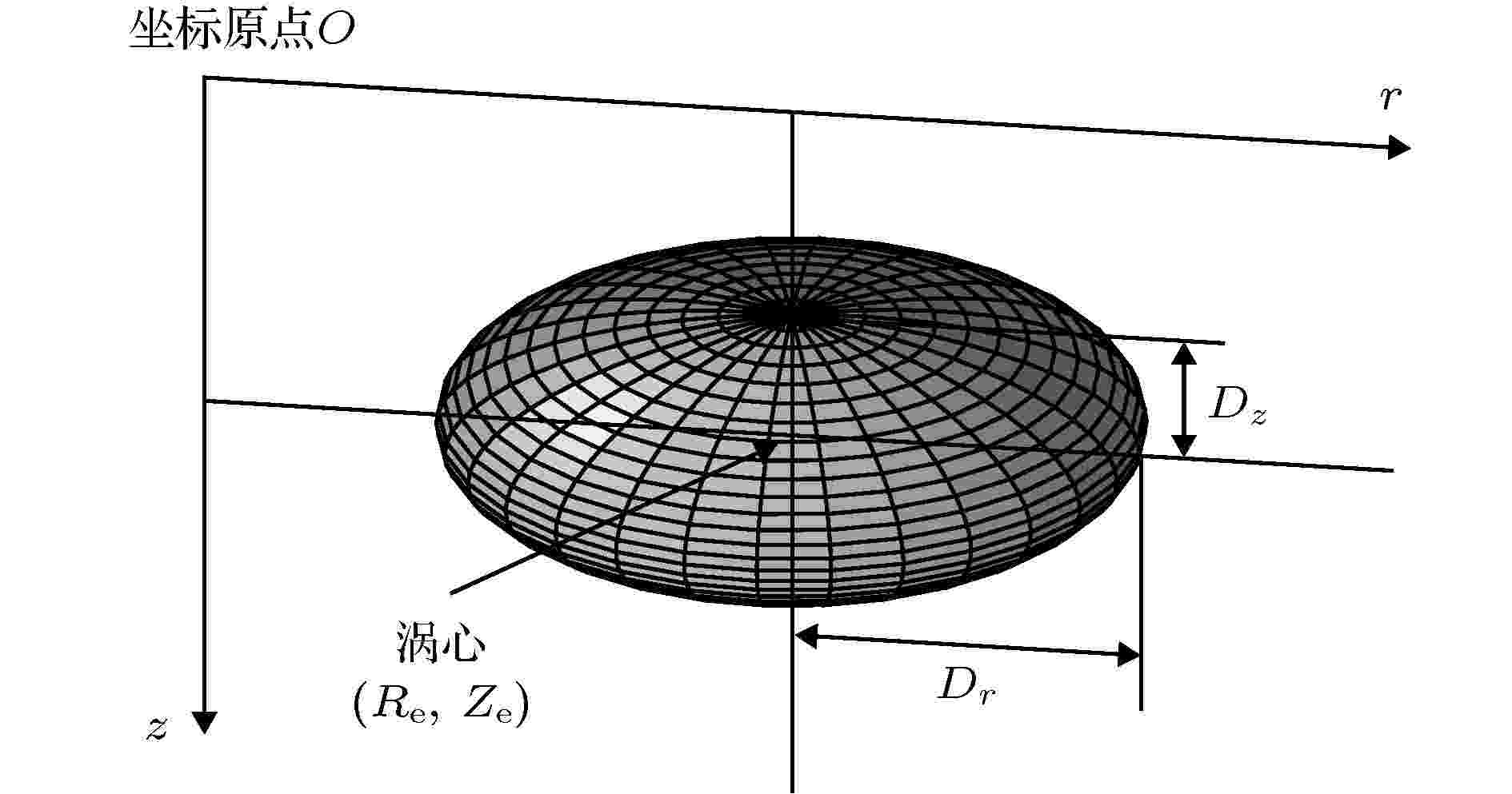
2020, 69 (14): 144301.
doi: 10.7498/aps.69.20200059
Abstract +
Mesoscale eddy is a marine phenomenon occurring frequently in deep ocean, and it will disturb the sound speed in the upper water layer. As a result, the mesoscale eddies will influence the propagation of wing-generated noise and cause the noise field to vary. In this paper, we investigate the effects of mesoscale eddies on the vertical spatial characteristics (including the noise vertical directionality and the noise vertical correlation) of wind-generated noise at different depths of its horizontal center of the eddy. In the study, the Gaussian eddy model is used to describe the sound speed fluctuation, and the ray and parabolic equation theories are used to describe the noise propagating in the near field and far field, respectively. Simulations indicate as follows. 1) At the depth of the eddy center, a clod-core eddy causes both the width of the horizontal notch and the noise vertical correlation to decrease, while the effect of a warm-core eddy is contrary to that of the cold-core eddy. 2) At the depth far from the eddy center, the effect of eddies is reduced, a cold-core and a warm-core eddy only lead the peak at the down edge of the horizontal notch in the noise directionality to rise and fall, respectively, and do not influence the noise vertical correlation. 3) The effect of an eddy becomes severe as its absolute strength becomes higher. The ray reversion method based on the principle of reciprocity is used to explain the physical reason behind the above phenomena. By the method the rays are launched from the noise receiving point and the polar angle and the strength of the noise arriving reversely along the ray paths are analyzed. It is shown that the change of the polar angle and the strength of the noise arriving reversely along the surface reflected ray paths in the presence of eddies are the main cause for changing the noise vertical spatial characteristics. Furthermore, simulations show that the analyses and conclusions in the study are still approximately valid when the receiving point deviates from the eddy center but the horizontal distance between them is short.

EDITOR'S SUGGESTION
2020, 69 (14): 144701.
doi: 10.7498/aps.69.20200255
Abstract +
Based on the large eddy simulation, the boundary of a vortex and the coordinates of its core are both obtained by using the Lagrangian coherent structure method and the location extraction method of the vortex core, and thus the method of representing fluid density inside a vortex is proposed. The density distribution characteristics of fluid inside the vortex in a supersonic mixing layer are revealed by analyzing the changes in density of the fluid inside a vortex under different conditions (e.g. spatial size of the vortex, compressibility of the supersonic mixing layer, and merging process of the two paired vortices) as follows. For the weak and medium compressive supersonic mixing layers, the density distribution of the fluid inside a vortex is symmetrical about both the flow direction (x-axis) and longitudinal direction (y-axis), the fluid density at the vortex core is lowest while it is highest at the vortex boundary, and fluid density increases monotonically and nearly uniformly along the ray connecting the vortex core and the vortex boundary. For the strongly compressible supersonic mixing layer, however, the density distribution of the fluid inside the vortex is no longer symmetrical about any flow direction and moreover it shows the fluctuation characteristics of fluid density distribution. With the increase of the spatial size of a vortex and the compressibility of a supersonic mixing layer, the fluid density at the vortex core decreases (the maximum reduction is about 31%–56%) while it changes about 6%–27% at the vortex boundary. In the merging process of two adjacent vortices, the variation of fluid density in the two vortices is slight, which shows that the merging process is probably of a peer-to-peer combination of fluid inside the two adjacent vortices. Considering the practical engineering applications, the density distribution characteristics of fluid inside the vortex in the supersonic mixing layer with different inflow densities of its upper and lower layers are also investigated, and the results show that the density distribution of the fluid inside a vortex is symmetrical about the longitudinal direction (y-axis), but not the flow direction (x-axis). It is also found that the density distribution near the vortex boundary is determined by the inflow density there, so a good strategy of reducing the aero-optical effects caused by the supersonic mixing layer is that the difference in density between the upper and lower layers should be as small as possible.

2020, 69 (14): 144702.
doi: 10.7498/aps.69.20200102
Abstract +
Separate flow is a typical complex turbulent phenomenon. The full development of small-scaled structures is of great importance for accurate numerical simulation. However, these small-scaled structures can be easily damped by the inherent dissipation of numerical method. Therefore, based on the 5th-order dissipative compact scheme (DCS), we propose an adaptive dissipative compact scheme (ADCS), which can adjust the numerical dissipation with self-adaptive capability by incorporating a flow related adjusting parameter. Combining with the delay detached eddy simulation (DDES), the ADCS can reduce the influence of numerical dissipation in LES region to enhance the ability to discern small-scaled structures, and restore the normal dissipation level in the RANS region to keep numerical stability. In the process of numerical simulation, firstly, the approximate dispersion relation (ADR) is obtained, it shows that the ADCS method can effectively reduce the influence of dissipation in the high wave number region, without contaminating the dispersive performance, which is conducive to enhancing the resolution of turbulent structures. Secondly, the advection of vortical structure is simulated. Compared with DCS, the ADCS can reach the theoretical accuracy in an efficient way and acquire more advanced resolution of vortical structure even on a relatively coarse mesh scale, which proves that the ADCS reduces the negative influence of dissipation on vortical structure. The third case is the decay of isotropic turbulence. The energy spectral curves stay close to the reference before cut-off number, showing that more small-scaled structures can be distinguished by the ADCS method, and most of the vortical dominated regions are solved at a near-minimum level. The forth case is the plate channel turbulent flow. Both of DCS method and ADCS method give acceptable results. The ADCS method is performed with optimal dissipation in the near-wall region and reduces the dissipative level in the vortex dominated region, and it is also exhibited that the ADCS method can maintain the stability for flow with high gradient and avoid divergence. Finally, the sub-critical Re = 3900circular cylinder is simulated, and the fully separate flow is developed in the wake. The turbulent fluctuation near the wall is sensitive to the effect of numerical dissipation. The contour of flow field shows that the ADCS method obtains more small-scale structures. As for the pressure coefficient and mean velocity, the ADCS method shows an acceptable accuracy. Considering the Reynolds stress profile, which can be easily affected by the dissipation, the ADCS exhibits more accurate results than the traditional DCS method. Generally, the ADCS method can reduce the influence of dissipation and is beneficial to acquiring more accurate results in separate flow.
PHYSICS OF GASES, PLASMAS, AND ELECTRIC DISCHARGES

2020, 69 (14): 145201.
doi: 10.7498/aps.69.20200222
Abstract +
The Chinese fusion engineering testing reactor (CFETR), complementing the ITER facility, is aimed at building up the science and technology base for the prototype of fusion power plant (PFPP). Based on the dispersion relation of fast wave, the analysis of the plasma dispersion function $ Z(\xi )$ is performed and a numerical solution of $ Z(\xi )$ is obtained. As the consequence, the dependence of helicon wave damping factor G on the plasma parameters and that on the wave properties are both achieved. The results show that an off-axis power deposition of the wave along the device radius can be achieved under the condition of plasma discharge on CFETR tokamak. Moreover, by calculating the ratio of the electron Alfven damping in the ion cyclotron range of frequencies to the electron Landau damping, we find that the electron Alfven damping is dominant at lower wave frequencies. With the wave frequency increasing, the electron Alfven damping remains unchanged while the Landau damping increases rapidly. With the discharge parameters of CTETR hybrid mode, the electron Landau damping proves to be dominant. Moreover, the off-axis power deposition and current drive profiles are produced. It is shown that the helicon wave damping factor increases with wave frequency increasing and it is closely related to the parallel refractive index of the injected wave spectrum, the plasma density, and plasma temperature. Significant off-axis power deposition and current drive are shown in CTETR hybrid mode operation, and the current drive efficiency reaches 50 kA/MW for helicon wave with a frequency of 800 MHz. Numerical simulation performed on the GENRAY/CQL3d shows a good consistence with the experimental results.

2020, 69 (14): 145202.
doi: 10.7498/aps.69.20191700
Abstract +
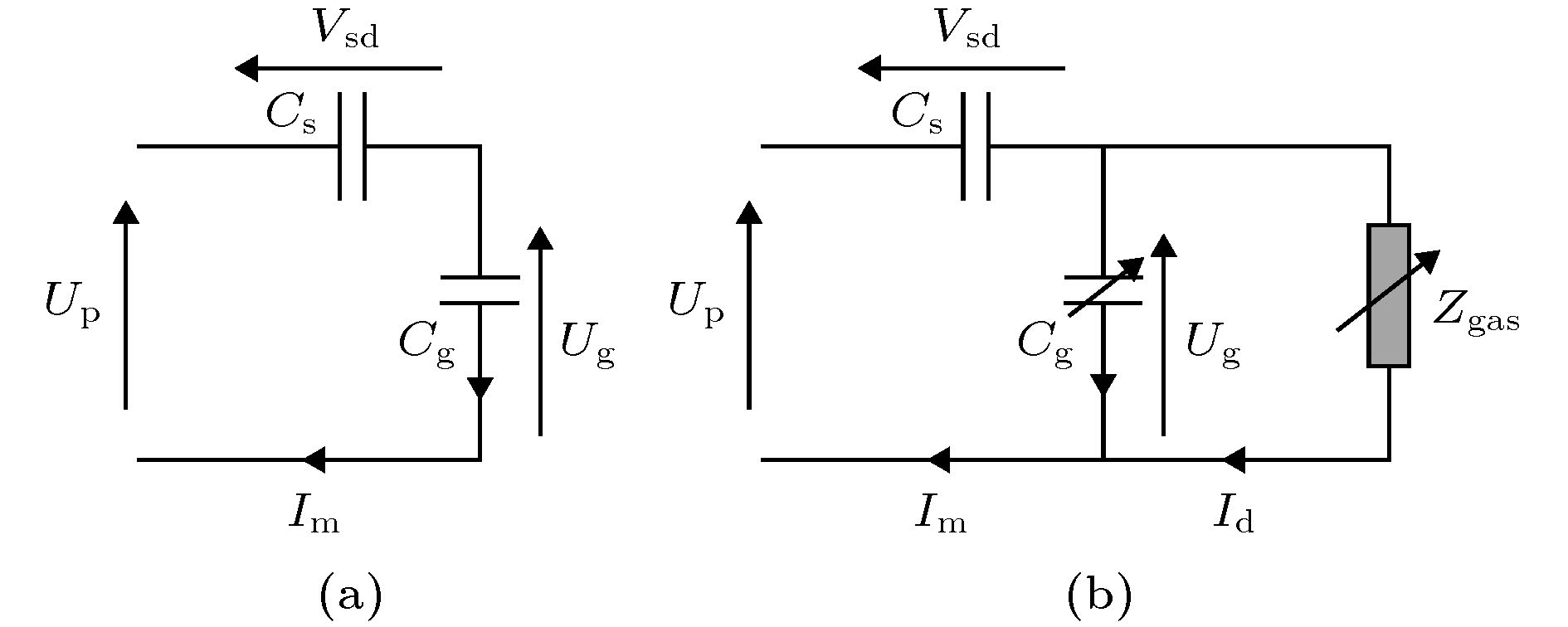
2020, 69 (14): 145203.
doi: 10.7498/aps.69.20200473
Abstract +
Dielectric barrier discharge is widely used as a low-temperature plasma source in industry. Columnar discharge is an important form of dielectric barrier discharge. However, its discharge theory has not been clear yet. In this paper, the dielectric barrier discharges in helium at atmospheric pressure are carried out between parallel dielectric barrier electrodes to study the evolutionary dynamics of single-multiple columns. By reducing the applied voltages to a value lower than the initial discharge voltage, the pattern of the columnar discharge evolves from a single column into multiple columns. Discharge images from the bottom are taken to observe the evolution of discharge and measure the diameter of discharge column and spacing between columns. The applied voltage, the Lissajous figure, the discharge current, and the discharge transferred charge are measured in order to calculate the Coulomb force and the magnetic field force exerted on the column by the other columns. It is found that in columnar discharge, there is a dynamic evolution process that the single columnar discharge evolves into the two-layered columnar discharge when the applied voltage slightly decreases instantaneously. On the one hand, the column diameter is different in different layer: the column diameter increases from the center to the outer layer. On the other hand, as the applied voltage decreases, the diameter of the center column grows and the spacing between the center column and its adjacent column decreases. The calculations show that the Coulomb force is far greater than the magnetic field force when the evolution is stable, which indicates that, as mentioned in the established knowledge, there is a confinement potential to balance the Coulomb force, thereby keeping the distribution of discharge columns stable. Furthermore, the results also show that the Coulomb force on the discharge columns at different voltage and position is different. The strength of Coulomb force on column is different at different layer: it decreases from the outermost layer to the center column, which is zero on the center column. Based on the balance between the Coulomb force and the confinement potential in columnar discharge, it is suggested that the strength of the latter may also follow the same law. In addition, as the applied voltage decreases, the charges accumulated on the surface of the dielectric and the number of discharge columns both increase, which results in the increase of the maximum of the Coulomb force. The confinement potential may increase as well and follow the same law.
CONDENSED MATTER: STRUCTURAL, MECHANICAL, AND THERMAL PROPERTIES
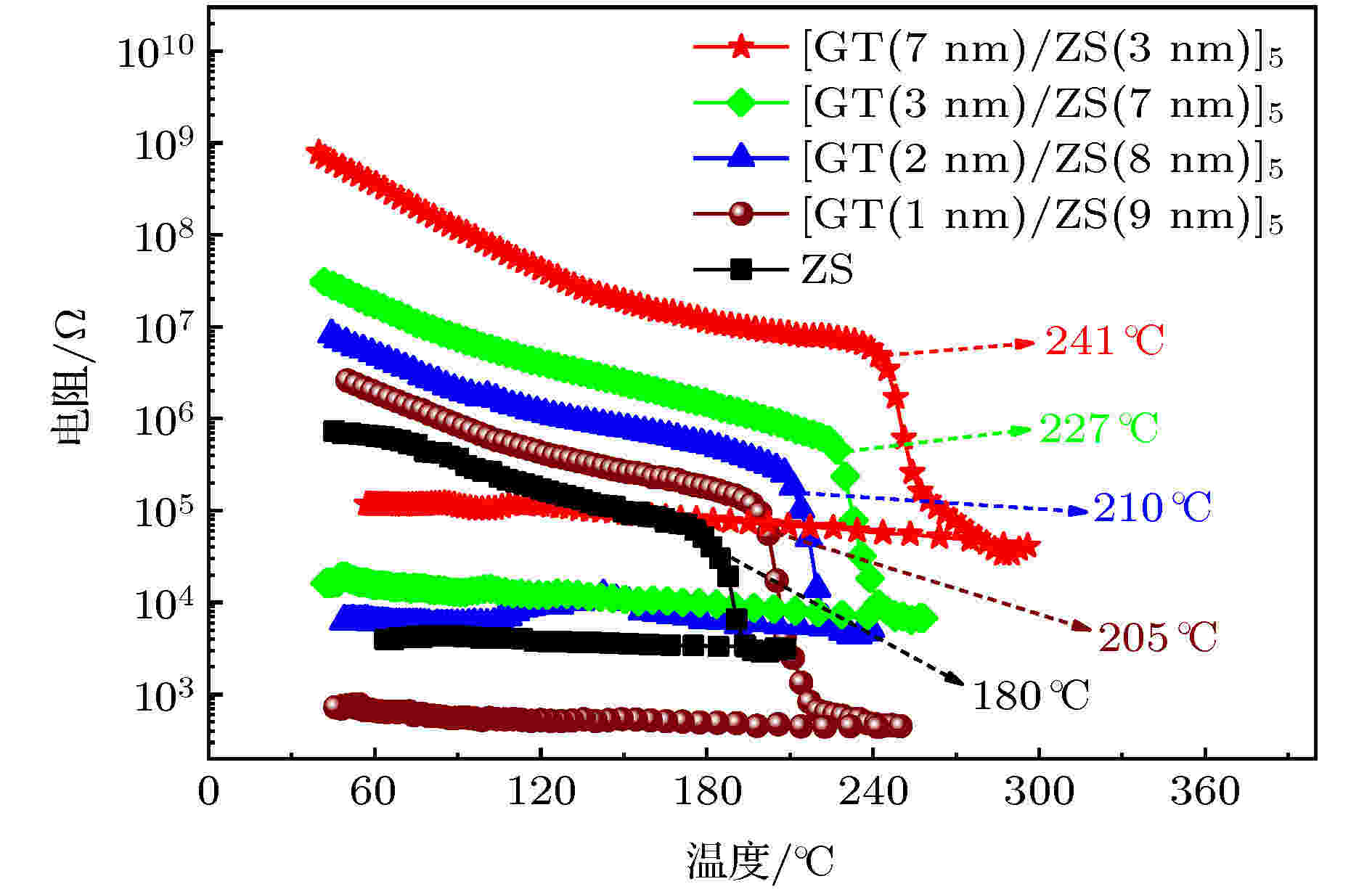
2020, 69 (14): 146101.
doi: 10.7498/aps.69.20200502
Abstract +
The Ge50Te50/Zn15Sb85 nanocomposite multilayer films are prepared by the magnetron sputtering. The variation of resistance with temperature and with crystallization activation energy is studied. The multilayer structure of the section before and after the crystallization for Ge50Te50/Zn15Sb85 nanocomposite multilayer film is compared by transmission electron microscope. The phase change memory device based on [GT(7nm)/ZS(3nm)]5 is manufactured, and the electrical performance is measured. The fast switching speed, low operating power consumption, and good cycling performance are achieved for Ge50Te50/Zn15Sb85. Ge50Te50/Zn15Sb85, which is a kind of nanocomposite multilayer film, a promising phase change storage material with high thermal stability and low power consumption.
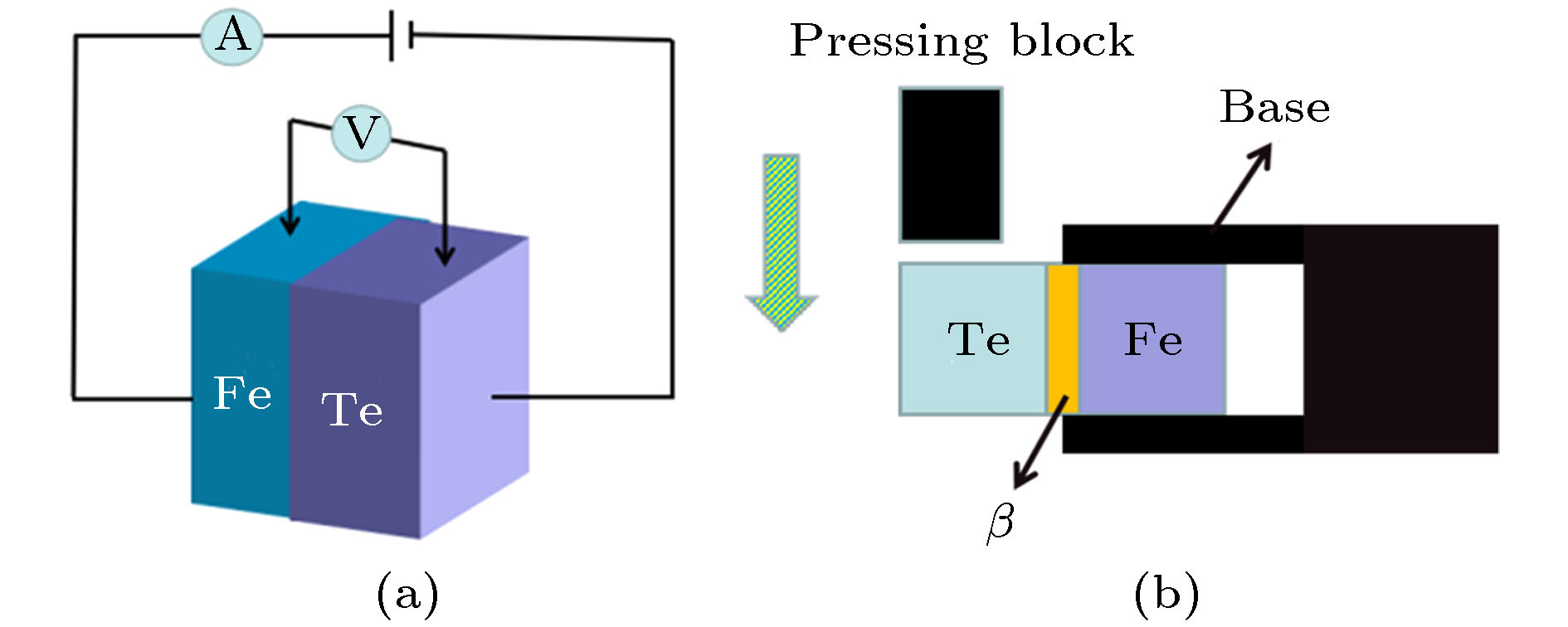
2020, 69 (14): 146801.
doi: 10.7498/aps.69.20200436
Abstract +
Owing to their excellent performances, Te-based thermoelectric materials have been extensively concerned. However little attention has been paid to the bonding interfaces with electrodes, which play an important role in their practical applications. Excessive element mutual diffusion occurs across the bonding interfaces when Te is connected with metallic electrode, such as copper, aluminum, iron, etc, which will impair its transport performance and life especially when they serve in the higher temperature environments. Seeking proper barriers is the key to solving the interface problem. In this work, a gradient bonding structure of Te/FeTe/Fe is prepared in one step by the spark plasma sintering (SPS) method, in which a metallic layer of FeTe, referred to as β(FeTe) phase, is introduced as barrier. The interface microstructure, element distribution, and new phases are analyzed, and the joint properties including contact resistance and shearing strength after being aged are evaluated. The results show that the introduction of β(FeTe) phase can promote the boding of Fe/β(FeTe)/Te and thus inhibiting the excessive element diffusion across the interfaces, which is due to the formation of ε(FeTe2) phase between β(FeTe) phase and Te. The contact resistance of Fe/β(FeTe) and β(FeTe)/Te are 4.1 μΩ·cm2 and 7.54 μΩ·cm2, respectively, and the shearing strength are 16.11 MPa and 15.63 MPa, respectively. The annealing temperature has significant effect on the performance of the gradient bonding structure. It has been indicated that the whole joint still owns good performance after being annealed at 553 K for 15 days, while it decreases sharply when the temperature is increased to 573 K. Hence, the optimal service temperature of Te/β(FeTe)/Fe should not be higher than 553 K. The gradient bonding structure is successfully achieved, thus attaining the purposes of inhibiting interface elements from excessively diffuse, reducing interface residual stress, and improving interface working stability and service life. So the design ideas and research results in this work have great reference significance for the study on semiconductor devices.

2020, 69 (14): 146802.
doi: 10.7498/aps.69.20191955
Abstract +
Single-layered III-VI compounds have potential applications in many fields, such as highly sensitive photodetectors, field effect transistors, and electrochemical sensors, due to their wide range photosensitivities and excellent electronic properties. This paper presents a new two-dimensional tetragonal allotrope (called haeckelites structure) of single layered group III monochalcogenides MX (M = Al, Ga, In; X = S, Se, Te), which are constructed from the square and octagon rings. The first-principles calculations are performed using the Vienna ab initio simulation package (VASP) based on density functional theory (DFT). The cohesive energy of the haeckelite structure MX is positive and a little smaller than that (0.07—0.10 eV) of the hexagonal MX. The phonon spectra for the haeckelites structure MX have basically no imaginary frequencies in the whole Brillouin zone. The calculated binding energy and phonon spectrum show that these structures are energetically and dynamically stable. For all the compounds, the charge density isosurfaces show that most electrons are localized at the positions of X and M atoms, indicating that the M—X bond is ionic and M—M bond is covalent. All of haeckelite structure MX are indirect bandgap semiconductors, and their band gap sizes decrease with the X atom changing from S to Se to Te. For example, the band gaps of InS, InSe, and InTe are 2.42, 2.07, and 1.88 eV, respectively. The calculation results show that these materials have a wide band gap range from 1.88 to 3.24 eV. We find that the band gaps of AlS, AlSe, and GaS are relatively large with the values of 3.08, 3.03, and 3.24 eV, respectively. This may make them suitable for optically transparent devices. The band structures of GaSe, InS, InSe, and InTe can be further modulated by the biaxial strains. Their band gaps decrease linearly with the strain increasing. The band gap of AlS and AlSe both first increase and then decrease with the strain increasing.
CONDENSED MATTER: ELECTRONIC STRUCTURE, ELECTRICAL, MAGNETIC, AND OPTICAL PROPERTIES
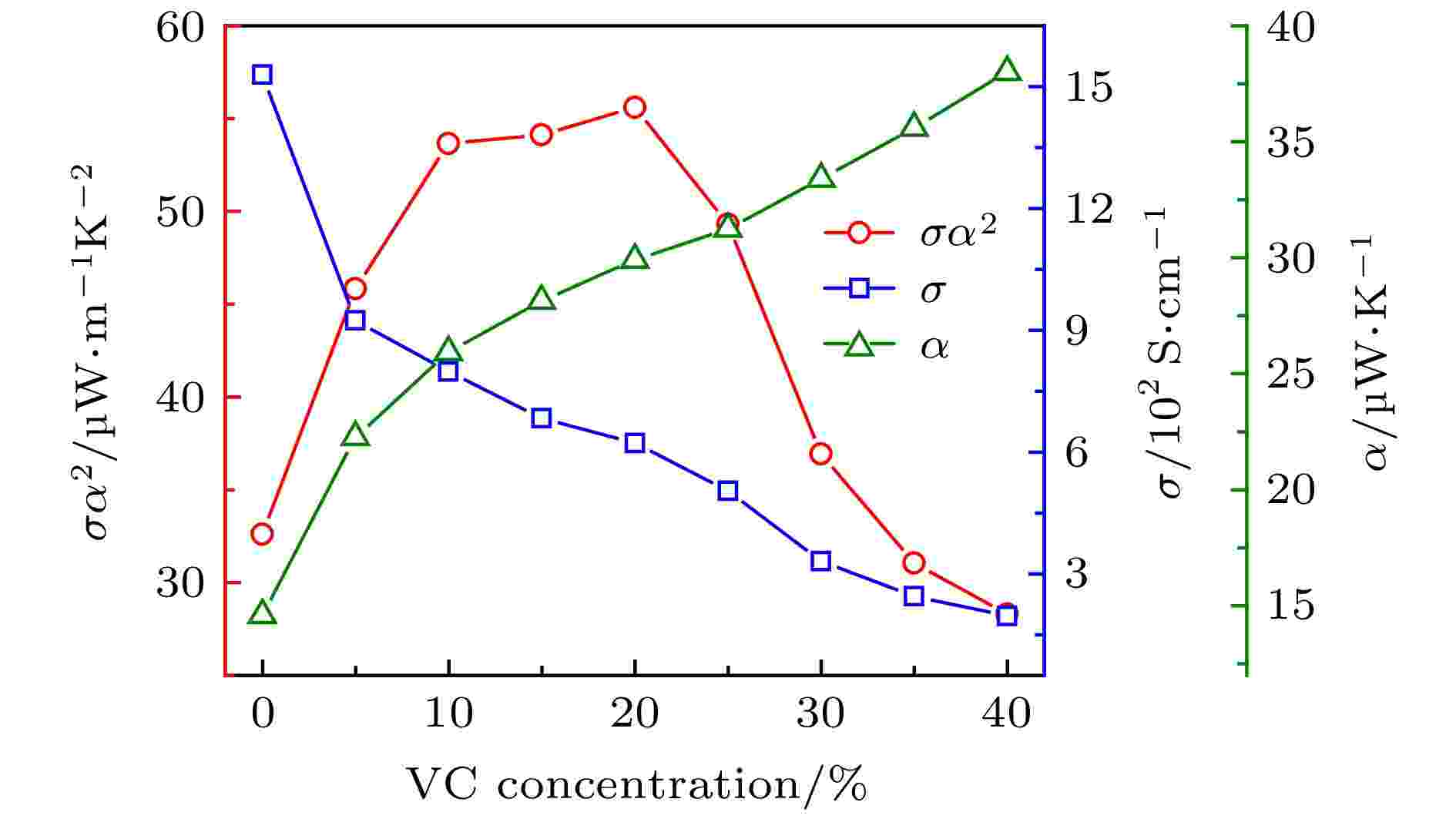
2020, 69 (14): 147201.
doi: 10.7498/aps.69.20200431
Abstract +
Thermoelectric (TE) material is a kind of energy conversion material, which can be used for power generation and refrigeration. Until now, traditional inorganic TE materials have shown high dimensionless thermoelectric figure of merit (ZT) values. But their expensive raw material and high processing cost, heavy metal pollution and poor processability limit their broad applications. Poly(3,4-ethylenedioxythiophene) (PEDOT) conducting polymers possess some excellent features, such as high electrical conductivity, low thermal conductivity, flexibility, low cost, abundance, and light weight. More and more attention has recently been paid to the TE properties of PEDOT polymers and PEDOT polymer based nanocomposites. Ascorbic acid (VC) is used as a reducing agent to tune the PEDOT-Tos-PPP film. The PEDOT-Tos-PPP films via VPP technique are treated with VC solutions with different concentrations. The TE properties of the films before and after being treated with VC at different concentrations are measured. The effect of concentration of VC aqueous solution on the thermoelectric properties and stabilities of the film are studied. The results indicate that the power factor of the film after being treated with 20% VC is 55.6 μW·m–1·K–2, which is 1.7 times as high as that of the pristine PEDOT-Tos-PPP film (34.4 μW·m–1·K–2). The maximum ZT value at room temperature is 0.032. After the VC treatment, the conductivity and Seebeck coefficient of the PEDOT film show unstable characteristics in the air, which is mainly due to the further oxidation of the neutral state on the PEDOT film surface in the air.

EDITOR'S SUGGESTION
Grain and grain boundary characteristics and phase transition of ZnS nanocrystallines under pressure
2020, 69 (14): 147202.
doi: 10.7498/aps.69.20200240
Abstract +
In this paper, the grain and grain boundary characteristics and mechanisms of phase transition (from wurtzite to zinc-blende to rock-salt phase structure) of ZnS nanocrystallines are investigated via in situ impedance measurement under pressure up to 29.8 GPa. It should be noted that there are two semiarcs can be found from the modulus plots of ZnS under different pressures. The semiarc in high frequency region represents the grain characteristic, and another one in low frequency region refers to the grain boundary characteristic. The former decreases gradually with pressure increasing and the latter shows an opposite trend. This fact indicates that the effect of grain characteristic becomes weaker and weaker, and the role of grain boundary characteristic is just on the contrary. The grain resistance and grain boundary resistance of ZnS nanocrystalline are also studied. In the low pressure region, both resistances increase with different increment rate with pressure increasing, which can be attributed to the enhanced ability of trap charge carriers due to the small size effect of nanoparticles. In addition, two discontinuous points (about 11 and 15 GPa) can be observed in both resistance curves, corresponding to the points of phase transition from wurtzite to zinc-blende to rock-salt phase structure. With pressure increasing, both resistances decrease gradually until 21 GPa, and this point corresponds to the end of transition from zinc-blende to rock-salt phase structure. Their consequent variations are different, grain boundary resistance gradually decreases with the pressure increasing, while the grain resistance is almost a constant. Additionally, the relaxation frequency, as an intrinsic characteristic, is not affected by the geometrical parameters. According to the linear relation between the grain boundary relaxation frequency and pressure in the pressure range of phase transformation, the mechanism of structure transition from wurtzite to zinc-blende to rock-salt phase structure is also discussed in detail. Based on the investigations, the in situ impedance spectroscopy can not only be used to accurately measure the grain and grain boundary characteristics, but also provide information for studying the phase transformation under pressure.
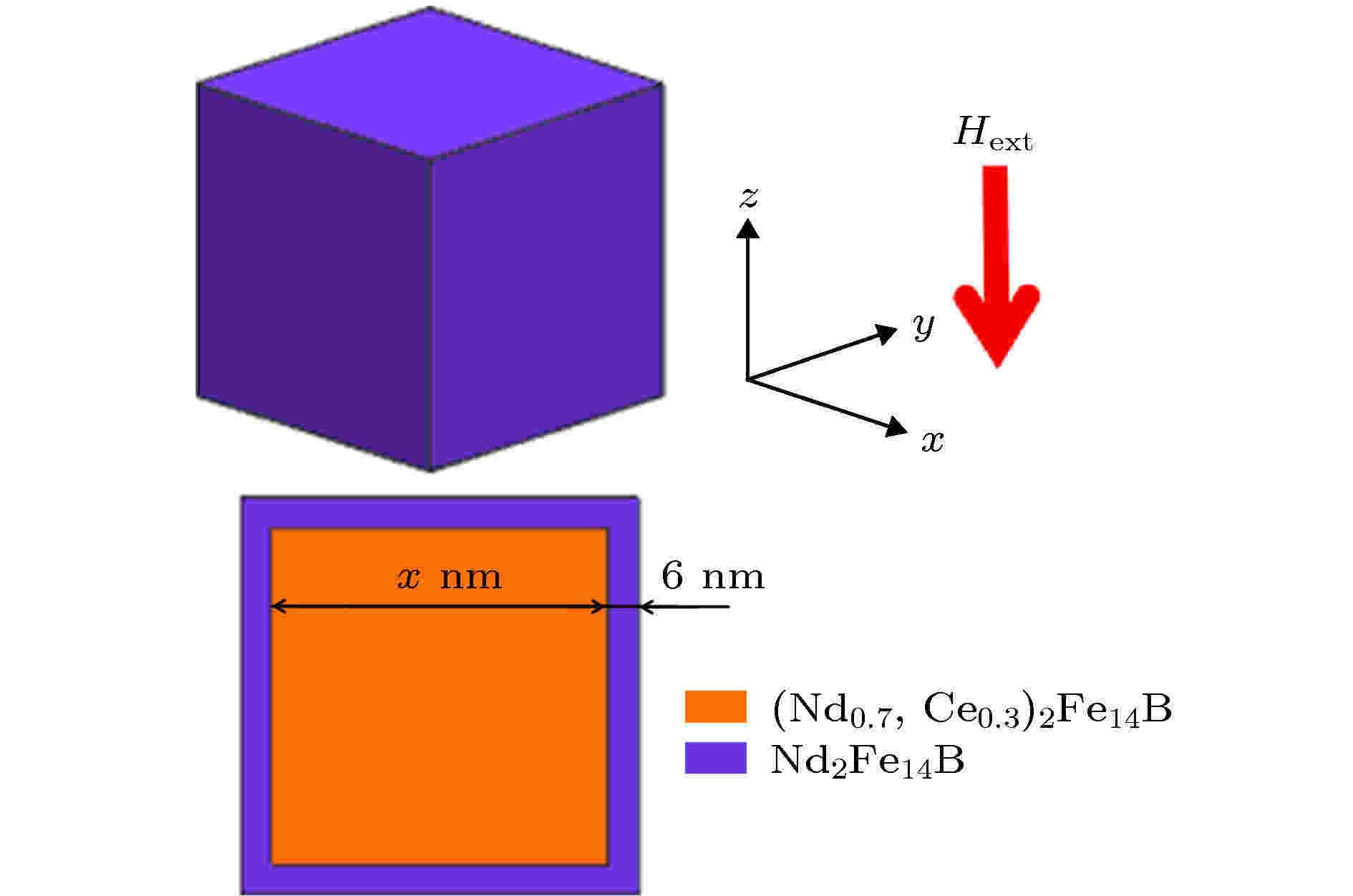
2020, 69 (14): 147501.
doi: 10.7498/aps.69.20200435
Abstract +
The effects of core size, shell thickness and shell distribution on the coercivity of single-grain core ((Nd0.7,Ce0.3)2Fe14B)-shell (Nd2Fe14B) magnets are studied by programming and modeling them through using the C++ language. All the micromagnetic simulations are carried out via object oriented micro magnetic framework (OOMMF). The results show that the coercivity decreases with the increase of core size when the shell thickness is constant. It is considered that for the grain, the increase in the size of the core leads the average magnetocrystalline anisotropy field to increase and the total demagnetization energy to increase, thereby contributing to the magnetization reversal occurring under a smaller external field. When the core size is unchanged, as the shell thickness increases gradually, the coercivity first increases and then decreases. The analysis of the position of the nucleation point shows that the reason why the coercivity increases in the early period is mainly that the nucleation point is located at the core-shell junction and belongs to the core. As the thickness of the shell increases, the exchange interaction effect between the magnetic moment of the shell and the one of the nucleation point is strengthened, so a larger external field is needed in the nucleation process. As for the decrease of the coercivity in the later period, the main reason is that the nucleation points are exactly the vertices of the shell (also the vertices of the grain), and the increase of the shell thickness conduces to increasing the total demagnetization energy, so the nucleation points can be formed under a smaller external magnetic field. With core size and shell volume kept unchanged, when the shell is distributed on the two easy-axis planes (i.e. the planes perpendicular to the easy axis) of the core, the coercivity of the magnet reaches a largest value. It is because that the nucleation points are located at the vertices of the shell (also the vertices of the grain), of which the magnetocrystalline anisotropy field is larger, and the demagnetization field is smaller. Via magnetocrystalline anisotropy field, the demagnetization energy, nucleation point, etc, the changes of coercivity in above cases can be explained.
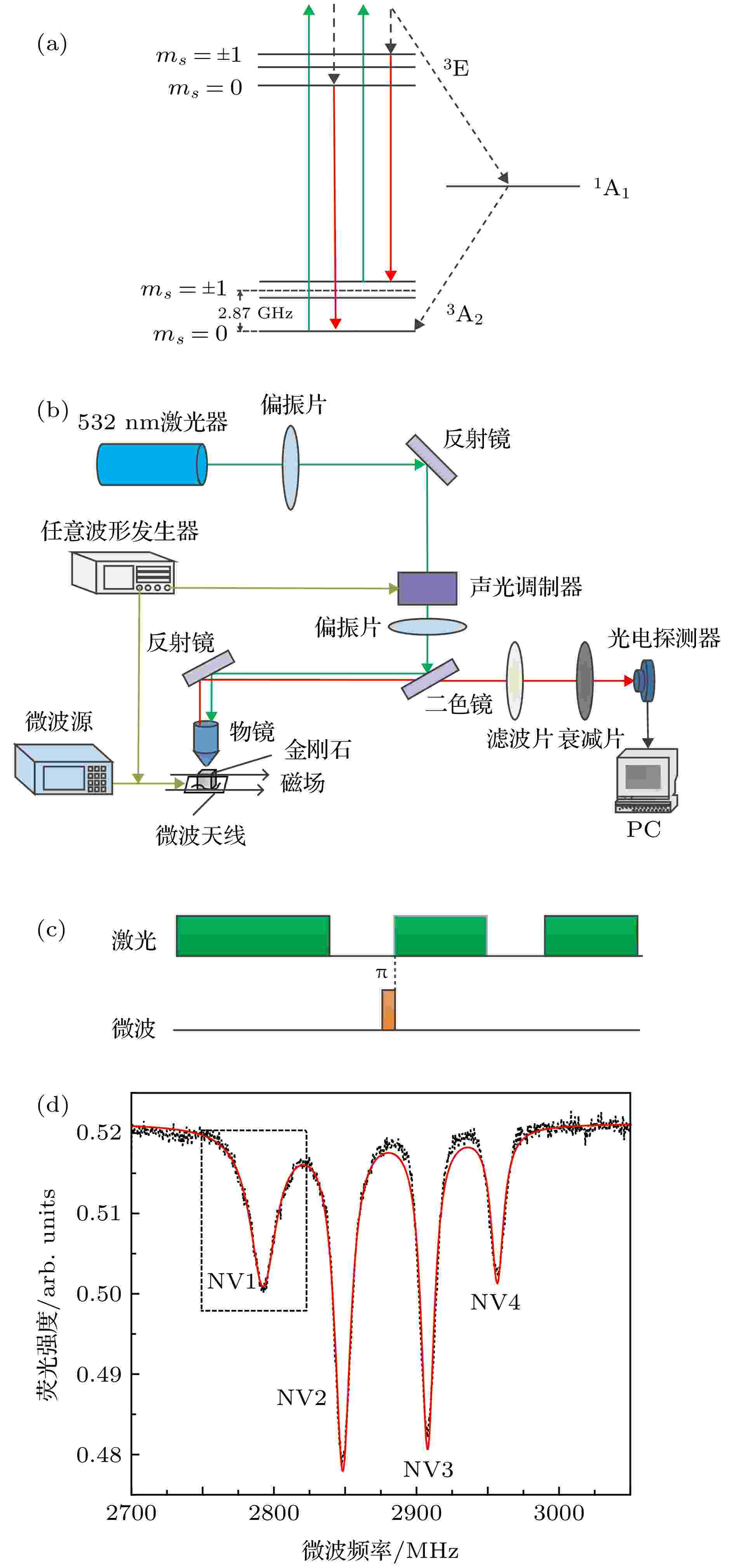
2020, 69 (14): 147601.
doi: 10.7498/aps.69.20200072
Abstract +
The nitrogen-vacancy (NV) centers in diamond have the advantages of stable triaxial structure, ultra-long electron spin coherence time and simple optical readout at room temperature. A nitrogen atom in the diamond crystal replaces a carbon atom and a vacancy is generated at the adjacent position, forming a point defect in the C3v space group structure. Its ground state and excited state are both spin triplet states. It is the key to achieving efficient preparation of optical initial state and extracting NV color center’s information in the researches of highly sensitive sensing magnetic detection, temperature detection, biological imaging, quantum computing, etc. However, there was no systematic study on relevant parameters of laser for high-concentration NV color center’s samples in previous experimental studies. Based on a high concentration diamond NV ensemble, we use pulsed optical detection magnetic resonance (ODMR) technology to systematically study the relationship among laser initial polarization time, information reading time and laser power, and the influence of laser incident polarization angle on the accuracy of sensing information. The effects of various laser parameters on the NV1 peak of ODMR on the [111] axis of the NVs of diamond are also investigated. The contrast of ODMR increases firstly with a sigmoid function and then decreases with an e-exponential function as the information reading time increases. The incident polarization angle of the laser is sinusoidal, with a period of 90°. According to the above experimental results, we finally choose the appropriate experimental parameters at 45.8 W/cm2 (300 μs of polarization, 700 ns, reading time, laser incident angle is 220°) for ODMR test. Compared with previous experimental parameters (polarization time was 50 us, read the time of 3000 ns, laser incident angle was 250°), the experimental results show that the contrast of ODMR increases from 2.1% to 4.6%, and the typical magnetic sensitivity is improved from 21.6 nT/Hz1/2 to 5.6 nT/Hz1/2. The optimization of the optical control of NVs in solid diamond is realized. The above results provide an effective support for the detection of high-sensitivity manipulation sensing based on high-concentration NV ensemble.
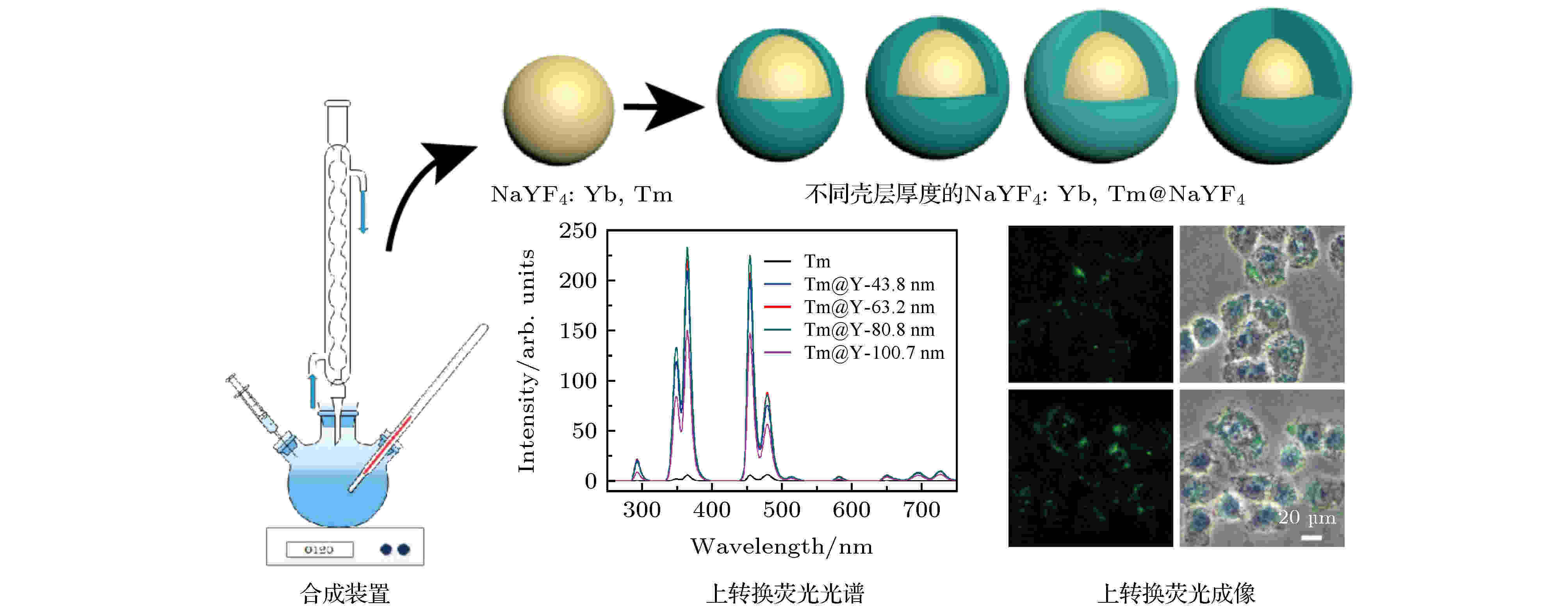
EDITOR'S SUGGESTION
2020, 69 (14): 147801.
doi: 10.7498/aps.69.20200347
Abstract +
In recent years, lanthanide-containing upconversion nanoparticles (UCNPs) have aroused the extensive interest in bioimaging due to their unique upconversion fluorescent properties, such as the high tissue penetration depth, good biocompatibility, low auto-fluorescence, and high imaging sensitivity. In this work, we synthesize a series of NaYF4:Yb, Tm@NaYF4 core-shell structured nanoparticles with various shell thicknesses. A “hot injection” strategy is introduced to fabricate the core-shell UCNPs through using high boiling-point mixtures (sodium/rare-earth trifluoroacetates dissolved in oleic acid and octadecene at 150 °C) as shell precursor solutions. The as-synthesized UCNPs are characterized by transmission electron microscope, particle size analysis and fluorescence spectra. The experimental results show that the shell thickness of UCNPs can be well controlled within a range from 4.2 nm to 32.6 nm by simply tuning the added quantity of the shell precursors. Meanwhile, the upconversion luminescence intensity of NaYF4:Yb, Tm@NaYF4 shows tens times higher than that of NaYF4:Yb, Tm owing to the effective suppression of surface quenching. The optimized thickness of the shell is determined to be 22.7 nm. An ultrathick inert shell (>22.7 nm) is not beneficial to upconversion luminescence mainly due to a strong scattering effect. In addition, the in vitro upconversion luminescent bioimaging application is demonstrated by using the as-synthesized core-shell structured UCNPs. Typically, the prepared OA capped UCNPs are dispersed in HCl solution to obtain hydrophilic ones, followed by polyethylene glycol (PEG) modification to improve their biological compatibility. The hydrophilic NaYF4:Yb, Tm@NaYF4@PEG nanostructures (denoted as UCNP@PEG) show a good biocompatibility with HeLa cells, as the viability of HeLa cells do not decrease obviously when the concentration of UCNP@PEG increases to 0.2 mg/mL. Then, we evaluate the upconversion luminescent signals of UCNP@PEG in HeLa cells under the excitation of 980 nm laser. An obviously increasing upconversion luminescent signal can be observed in HeLa cells with the incubation time increasing from 0.5 h to 6.0 h, indicating that the UCNP@PEG can be used as an excellent luminescence probe for cell imaging and monitoring the cell endocytosis process. All in all, we offer an efficient “hot injection” strategy of fabricating the core-shell structured UCNPs with various shell thickness for improving the upconversion efficiency of UCNPs, which will pave the way for new bioimaging and medical applications.
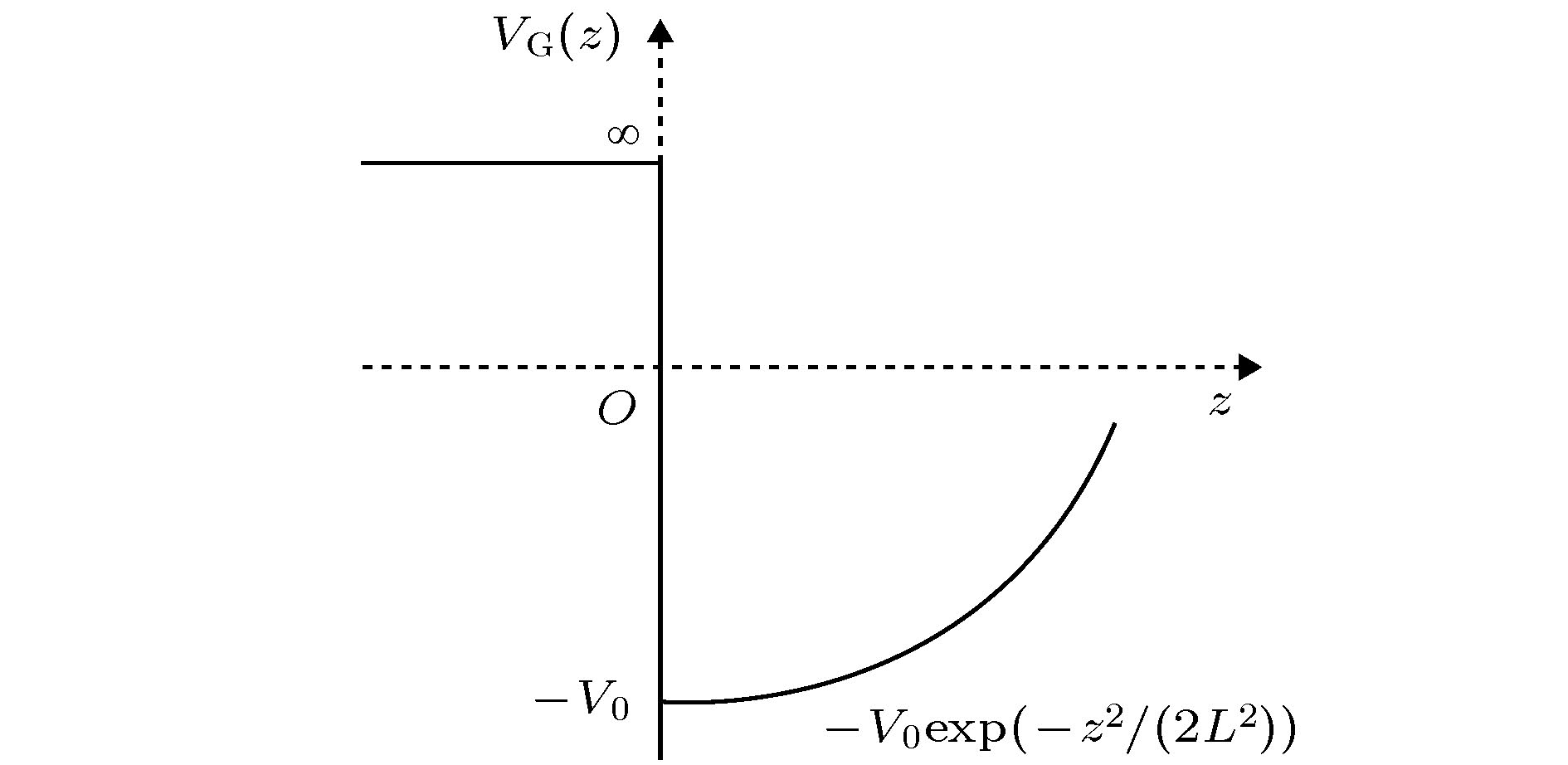
2020, 69 (14): 147802.
doi: 10.7498/aps.69.20200242
Abstract +
Recently, the measurement scheme of quantum dot qubit decocoherence quantized by the longitudinal optical (LO) phonon spontaneous emission rate has attracted the attention and discussion of many researchers. However, it is not difficult to see that the above-mentioned measurement scheme still has some insufficient and imperfect aspects that are to be studied urgently. Considering from the physical mechanism, the essence of the above scheme is to quantify the decoherence time of qubit by using the excited state decay time or excited state lifetime of the polaron. However, so far, there is little research on how the ground state decay time and ground state lifetime of two-state polaron affect the coherence of qubit. There is no doubt that this is an equally important research topic. This is because, firstly, for the coherence of the quantum state of polaron, both the decay of the excited state and the decay of the ground state will destroy or attenuate the qubit coherence, secondly, the transition rate of the two-state polaron from the ground state to the excited state after absorbing an LO phonon is also a function quantifying the qubit decoherence time of two-state system of which the inverse is called the ground state decay time or the ground state lifetime. It may be called a measure of qubit decoherence time quantized by the ground state decay time or ground state lifetime of polaron. In this article, the ground-state and excited-state energy and wave function of the magnetopolaron in a donor-center quantum dot with asymmetric Gaussian potential are derived by Lee-Low-Pines transformation and Pekar-type variational methodd, and then the two-level structure for a qubit is constructed. The measure of qubit decoherence time of quantum dots quantified by ground state decay time of two-state polaron is established, which is compared with the well-known measure of qubit decoherence time of quantum dots quantified by polaron excited state decay time, and their physical mechanisms are revealed. By studying the influence of dielectric constant ratio, electro-phonons coupling constant, temperature and electromagnetic field on the ground state lifetime of magnetopolaron in the donor-center quantum dots with asymmetric Gaussian potential, the influences of material properties, temperature, electromagnetic field and other environmental factors on qubit decoherence of quantum dots are revealed, thereby revealing the mechanism of qubit decoherence caused by LO phonon effect.
INTERDISCIPLINARY PHYSICS AND RELATED AREAS OF SCIENCE AND TECHNOLOGY
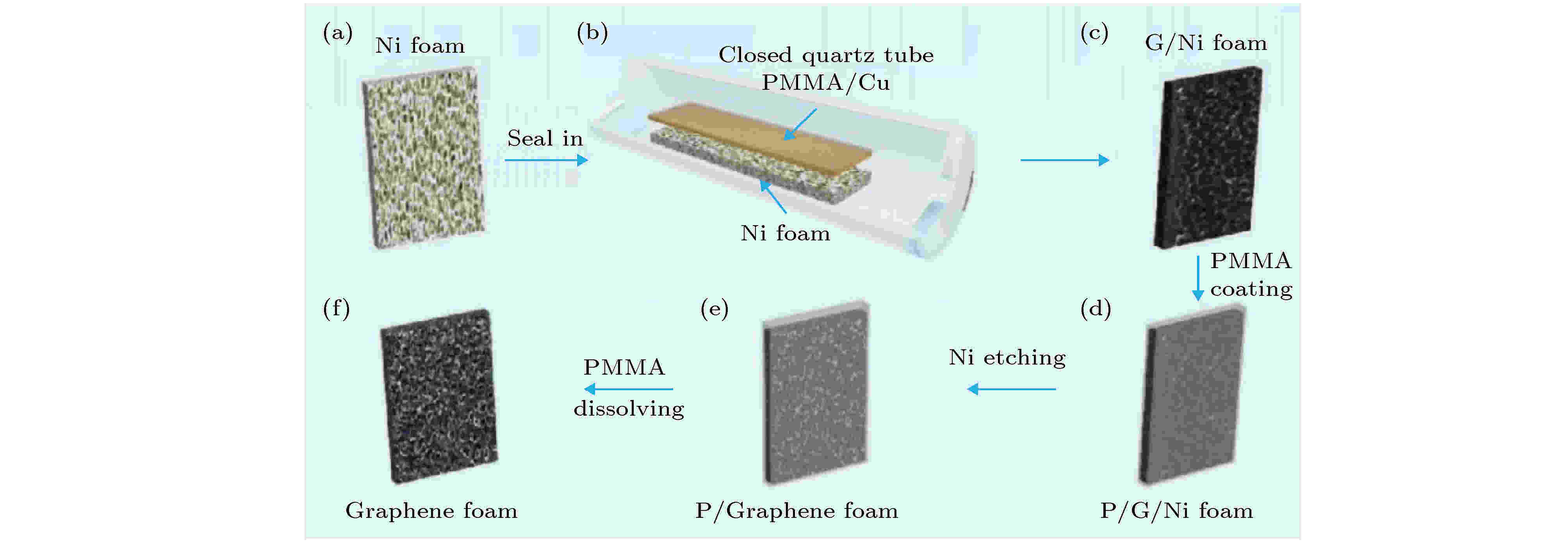
2020, 69 (14): 148101.
doi: 10.7498/aps.69.20200454
Abstract +
Three-dimensional graphene provides a promising approach to developing high-energy-density electrodes. Compared with two-dimensional (2D) graphene, three-dimensional (3D) graphene has a three-dimensional conductive network, which greatly improves the ability of lithium ions and electron to transport and can tolerate the changes of structural and volume in the cycling process. In this paper, 3D graphene with controllable defects is prepared by using an innovative low-pressure closed chemical vapor deposition method, through using nickel foam as the template and polymethyl methacrylate as a solid carbon source. The effects of the amount of carbon source addition, reaction time and hydrogen content on the morphology and structure of graphene foam are analyzed. The experimental results indicate that the amount of carbon source added, the reaction time, and the hydrogen content have significant effects on the morphology and structure of graphene. The defect density and the number of layers of as-prepared graphene are directly proportional to the amount of carbon source added. There is a threshold for the reaction time. After reaching a certain reaction time, graphene with good structure and morphology can be formed. The optimal reaction time is about 20 min. The hydrogen content promotes the high-temperature pyrolysis of solid carbon source. The sample has a highest defect density at 0.5 kPa hydrogen content. In summary, the low-pressure closed CVD method has strong safety and can synthesize 3D graphene with excellent controllable structure and defects. The 3D graphene foam with a complete structure of 2–5 layers can be prepared under the conditions of 1000 ℃, 500 μL carbon source addition, 20 min reaction time and 0.5 kPa hydrogen content, displaying the best physical chemistry performance. The graphene foam prepared in this experiment has the characteristics of convenient and controllable defect density, light weight and stable chemical properties. When ZnO/GF electrode prepared with 3D GF as a conductive frame and active carrier is used as an anode, the lithium ion battery has a high specific capacity of 851.5 mA·h·g–1 after 200 cycles, which exhibites high reversible capacity and good cycling performance. Although ZnO/GF electrode displays excellent lithium storage performance, the GF prepared based on the 3D Ni foam has a low spatial structure density and the surface loading of the ZnO/GF composite electrode is still low, resulting in a low energy density. Therefore, the following researchers should focus on the structural design of 3D graphene host/current collector to obtain a 3D graphene frame with high conductivity and high loading capacity.
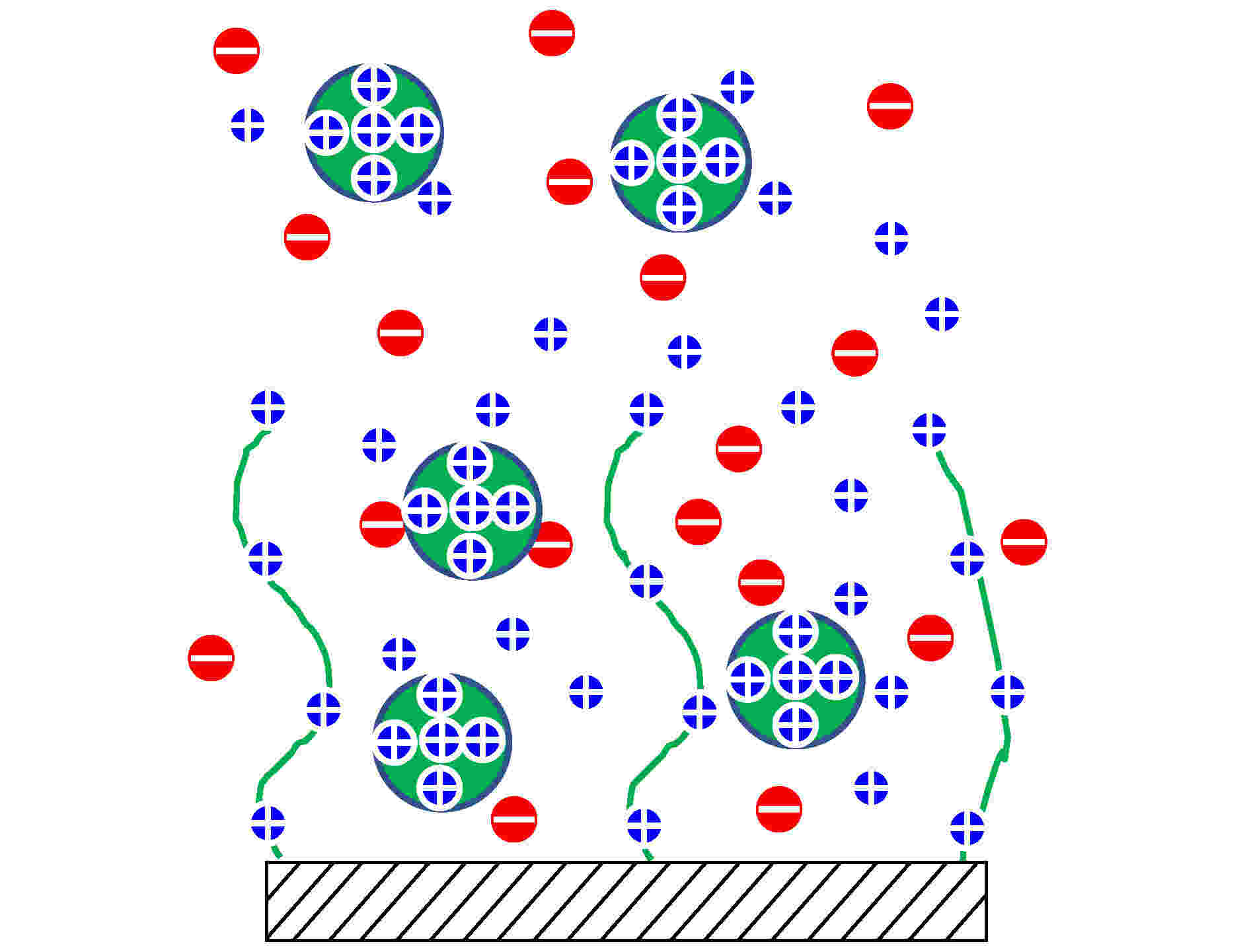
2020, 69 (14): 148201.
doi: 10.7498/aps.69.20200432
Abstract +
Nanoparticles can be used to tune the properties of polyelectrolyte brushes, and polyelectrolyte brushes can be used to control the interaction between nanoparticles and substrates. In the present paper, we investigate the polyelectrolyte brushes immersed in a nanoparticle solution within the analytical strong-stretching theoretical framework. The theoretical model does not take the excluded volume interaction between any two components into account. When there is no nanoparticle loaded, the polyelectrolyte brush is assumed to be an osmotic brush. Local electroneutral approximation is assumed to be still valid after the nanoparticles have been loaded. The loaded nanoparticles are not big enough to deform the grafted polyelectrolyte chains laterally. Analytical formulae for density profiles of each component and brush thickness are derived. The loaded nanoparticles always compress the polyelectrolyte brush. By analyzing the limiting case, a scaling-type diagram for behaviors of the nanoparticle-loading polyelectrolyte brush is constructed. Two characteristic nanoparticle controlling regimes are shown. When the charge of the nanoparticle, Z, is not very large, charged nanoparticles penetrate into the brush and the brush thickness is scaled by $H \sim (Z\varPhi)^{-1/3}$ , where $\varPhi$ is the nanoparticle volume fraction. When the nanoparticle charge Z is large enough, nanoparticles are mainly distributed outside the brush and the brush thickness is scaled by $H \sim (Z\varPhi)^{-1}$ . In the former case, the Coulombic repulsion between the grafted polyelectrolyte chains is screened by the counterions and the nanoparticles, and the brush behavior is determined by the balance between the chain elasticity and the osmotic pressure of the counterions and the nanoparticles. In the latter case, the electrostatic screening is executed by the counterions, and the chain elasticity is balanced by the osmotic pressure of the counterions. The two regimes are divided into subregimes which are dominated respectively by electrostatic or non-electrostatic interaction. The effects of size polydispersity of the nanoparticles are also investigated. It is found that the behaviors of the grafted polyelectrolyte chains are mainly determined by the ratio between the first two moments of the nanoparticle size distribution function. The polyelectrolyte brush is compressed more by the polydispere nanoparticles than by the monodisperse ones. Possible improvement in the present theory is discussed in the conclusion section.
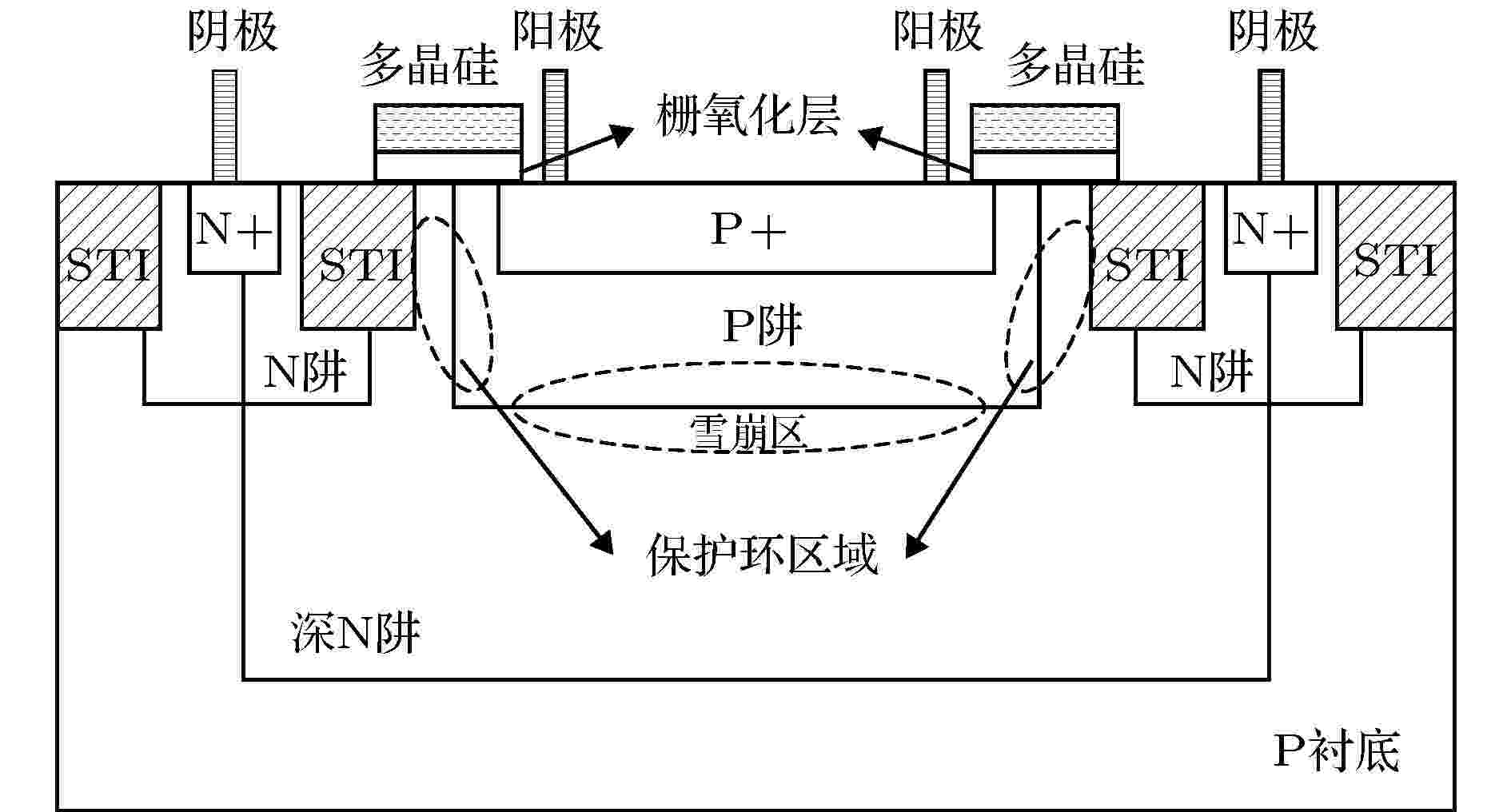
2020, 69 (14): 148501.
doi: 10.7498/aps.69.20200523
Abstract +
To suppress the effect of dark count noise on single photon avalanche diode (SPAD) detector, the mechanism and method of reducing the dark count rate (DCR) of SPAD device by using a polysilicon field plate is studied in this paper. Based on the 0.18-μm standard CMOS process, a polysilicon field plate located between the P+ active region and shallow trench isolation (STI) is deposited to reduce the dark count noise for a scaleable P+/P-well/deep N-well SPAD structure. Test results show that the DCR of SPAD device decreases by an order of magnitude after the deposition of polysilicon field plates, and its dark count performance at high temperature is even better than that of device without polysilicon field plate at room temperature. The TCAD simulation further indicates that the peak electric field in the guard ring region of the SPAD device is introduced into the STI by the field plate, and the overall electric field in the guard ring region is reduced by 25%. Finally, through modeling and calculating the DCR, the polysilicon field plate weakens the electric field of the guard ring region with high trap density, hence the trap-related DCR is significantly reduced. Therefore, the dark count performance of SPAD detector is effectively improved.
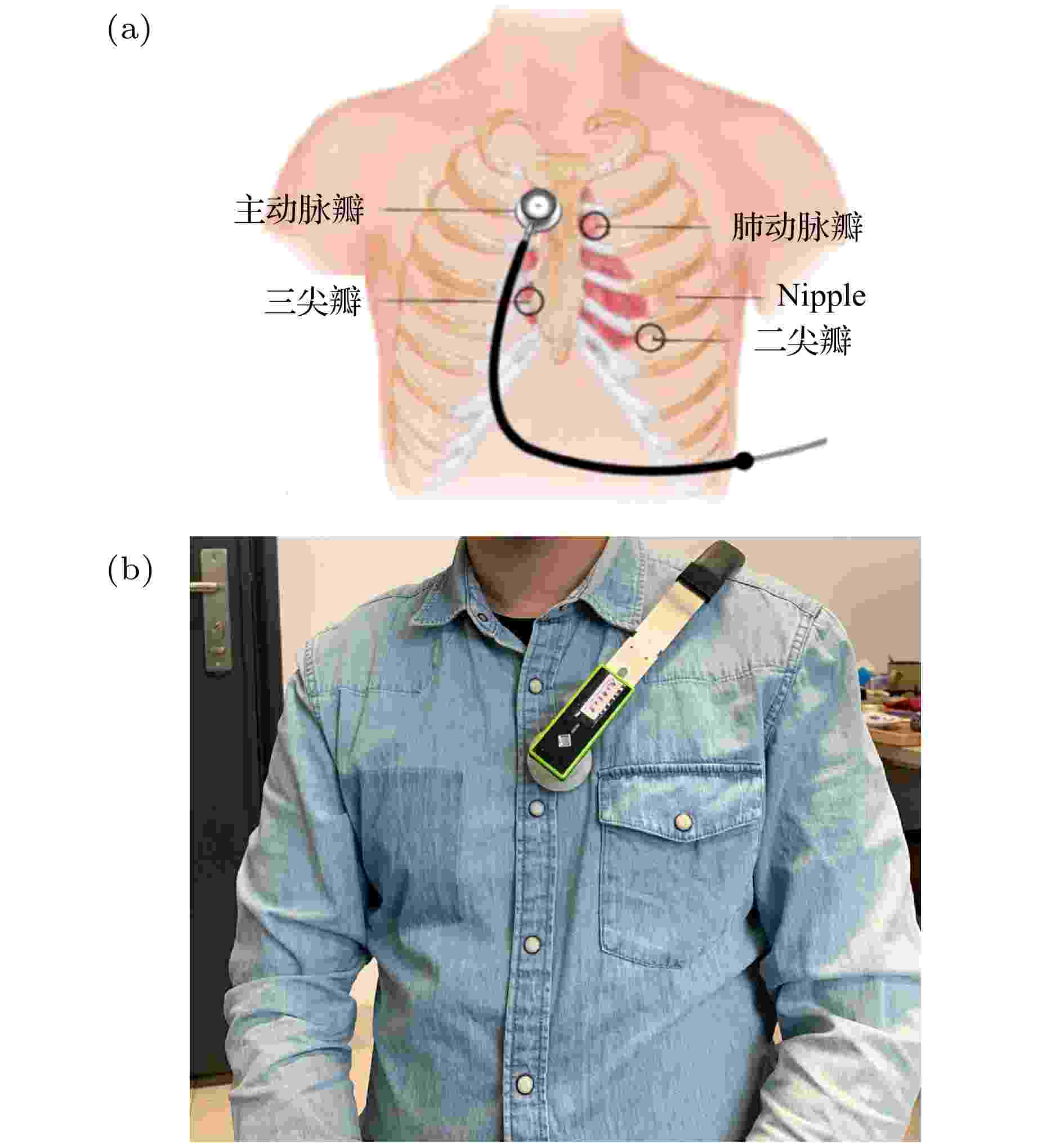
2020, 69 (14): 148701.
doi: 10.7498/aps.69.20200254
Abstract +
Cardiovascular disease, especially hypertension, has become one of the biggest killers of human life and health. Therefore, early detection and prevention of cardiovascular diseases are of great significance for people’s health. In this paper, we explore the relationship between aortic valve heart sound signal and blood pressure, and propose a method of non-invasively estimating blood pressure based on heart sound signals. First, according to the relationship between blood pressure and the heart sound signal, both the time interval between the peak point of the first heart sound and that of the second heart sound and the kurtosis of the second heart sound are extracted as features. Then the time interval between the first heart sound and the second heart sound, and the kurtosis of the second heart sound are linearly fitted to the measured blood pressure. Finally, according to the linear relationship between heart sound and blood pressure, a blood pressure evaluation formula based on the heart sound is established. The experimental results show that the time interval between the peak point of the first heart sound and that of the second heart sound, and the kurtosis of the second heart sound can be used as the characteristic parameters of blood pressure evaluation, which have a good linear relationship with blood pressure. The goodness of fit is 0.801 and 0.765, separately. The average error between the blood pressure calculated from the blood pressure calculation formula and the blood pressure measured by a commercial electronic sphygmomanometer is less than 5 mmHg, and the standard deviation is less than 8 mmHg. For hypertensive patients, the time interval between the peak point of the first heart sound and the second heart sound is shortened, and the kurtosis of the second heart sound is increased, which is a typical feature of heart sounds in patients with hypertension. Compared with the traditional blood pressure calculation method, the blood pressure assessment method proposed in this paper only needs to collect heart sound signals to effectively assess the blood pressure. The method is convenient to operate and can be used for continuously monitoring the blood pressure, and is especially suitable for monitoring the blood pressures of infants, disabled patients with limbs, and disabilities in certain medical environments.

2020, 69 (14): 148702.
doi: 10.7498/aps.69.20200335
Abstract +
Image quality assessment (IQA) plays a very important role in acquiring, storing, transmitting and processing image and video. Using the characteristics of human visual perception and the features of the gray, gradient, local contrast, and blurring of image, an IQA method based on the image content contrast perception is proposed in the paper, which is called MPCC. In the proposed method, firstly, combining with the characteristics of human visual perception, based on the definition of the contrast in physics, a novel definition for image quality and its calculation method are proposed. Then, based on the gray gradient co-occurrence matrix, a novel concept, namely the gray-gradient entropy of image, and its calculation method, are proposed. And based on the gray-gradient entropy, local contrast and blurring of image, a method of describing the image content and their visual perception are proposed. Finally, based on the image content features and the image quality definition, an IQA method and its mathematical model are proposed by comprehensive analysis. Further, the proposed IQA model MPCC is tested by using 119 reference images and 6395 distorted images from the five open image databases (LIVE, CSIQ, TID2008, TID2013 and IVC). Moreover, the influences of the 52 distortion types on IQA are analyzed. In addition, in order to illustrate the advantages of the MPCC model, it is compared with the seven existing typical IQA models in terms of the accuracy, complexity and generalization performance of model. The experimental results show that the accuracy PLCC of the MPCC model can achieve 0.8616 at lowest and 0.9622 at most in the five databases; among the 52 distortion types, the two distortion types, namely the change of color saturation and the local block-wise distortions of different intensity, have the greatest influence on IQA, and the accuracy PLCC values of the seven existing IQA models are almost all below 0.6, but the PLCC of the MPCC model can reach more than 0.68; and the comprehensive benefit of the performance of the MPCC model is better than those of the seven existing IQA models. These results of test and comparison above show that the proposed IQA method is effective and feasible, and the corresponding model has an excellent performance.


















